#secret weapons of the Luftwaffe
Text

USA 1990
13 notes
·
View notes
Photo

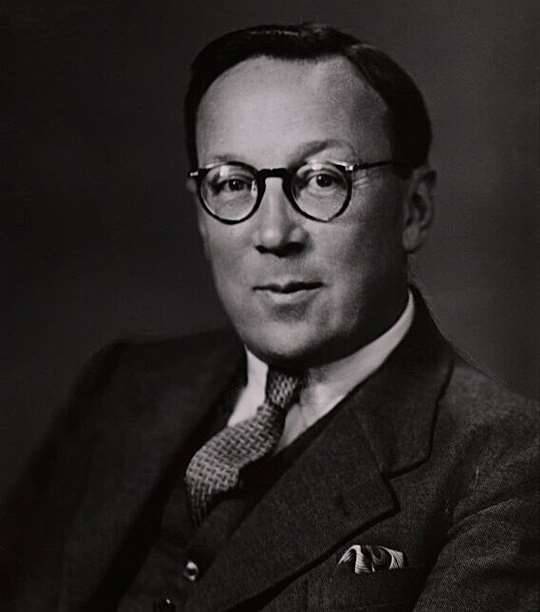

December 5th 1973 saw the death of Sir Robert Watson-Watt, the inventor of Radar.
Sir Robert Watson-Watt was widely known as the ‘father of radar’. In the 1930s he led a team of researchers to develop the aircraft detection technology that would later prove crucial to the Allied victory in the Battle of Britain.
Born in Brechin, Watson-Watt developed his interest in radio waves while at University College, Dundee. In 1915, he started work as a meteorologist at the Royal Aircraft Factory at Farnborough, where he used short-wave radio to detect the location of thunderstorms. Twenty years later he was invited by the Air Ministry to investigate the possibility of developing a ‘death ray’, whereby radio waves could heat up enemy aircraft and trigger their explosives. Watson-Watt and his assistant, AF Wilkins, quickly established the idea wouldn’t work. Instead, they successfully bounced a radio wave off a Heyford bomber at Daventry, demonstrating the potential for radar detection technology.
In 1936 Watson-Watt set up a new research station under the Air Ministry at Bawdsey Manor in Suffolk. Britain wasn’t the only country developing radio technology in these pre-war years, but Watson-Watt’s team were pioneers of the early systems, initially known as Radio Detection Finding before the introduction of the American term, RADAR (Radio Detection And Ranging). By the autumn of 1938, radar systems capable of detecting enemy aircraft at any time of day and in any weather conditions were in place along the south and east coasts of England.
The system was considered the ‘secret weapon’ of the Allied Forces during the Battle of Britain in 1940. Giving advance warning of Luftwaffe formations over France, the RAF were able to quickly scramble aircraft and intercept the surprised pilots over the channel. Without Watson-Watt’s influential leadership, such a system may never have been set up in time.
Watson-Watt was knighted in 1942 and later lived in Canada and the US before returning to Scotland. While in Canada he was reportedly caught speeding by a police officer using a radar-gun. ‘Had I known what you were going to do with it,’ he is said to have replied, ‘I would never have invented it!’
14 notes
·
View notes
Text

Secret Weapons of the Luftwaffe
Juego clásico donde puedes volar como piloto estadounidense o alemán durante la Segunda Guerra Mundial.
0 notes
Text
A serious post, tw: nazis
So I recently saw a video ranting about a book going something like this: "american girl meets a german POW" "So... a nazi?"
And please, can Americans, and maybe maybe the world too: learn the difference between the fanatics (the crazys who believed in the race bs) and that guys who were drafted and didnt wanted to get shot because they didnt go!
Because guess what? If you got drafted and didnt show up? You are in big trouble, and your whole family as well!
There are stories about soldiers of all sides helping civilians, almost as much as there are stories about soldiers doing harm to civilians. German soldiers did war crimes, Russians did too, Americans too! Only today are we beginning to know about the rapings done by american soldiers and the victims, woman and man, kept quiet for decades.
A normal soldier is capable of the worst things, as well as good things.
Now, who would end up an american or british POW, early enough in the war to be sent to the USA? Regular army, most likely Luftwaffe, air force.

So lets take Erich Hartmann, best ace the Luftwaffe ever had. One of those that followed the unspoken honour code (i.e. not shooting at the pilot on a parachute) on the eastern front. He was held prisoner from 1945-1955 in soviet Russia, among many others who were simple soldiers but the Sovjets said that they were mass murderers, fanatics, SS and kept them for ten years.
Another example:
youtube
Now, where those things doable at for example the Blitz? Or on the other side, when the US and UK bombed german cities day and night? Off course not.
They were army soldiers, following orders. Gruesome orders in a needless war. And dont even get me started on the war crimes in the pacific.
However even here we have a fascinating example of a "good nazi"
John Rabe, one of the foreigners in Nanking during the infamous Rape o Nanking, trying to save the chinese foreigners with the other foreigners. (What happened to China beforehand is also another different topic)
So yes, Nazis were those people that immediatly come to mind, but also people such as John Rabe. Normal soldiers, normal people, and the crazy ones as well. There is a difference between someone who believes in nazi bs and someone who is using his or her position to help.
Not SS, with a killing cause (now there also were small acts of resistance but the majority went along with it, leading to the atrocities and even worse). For example the wife of a camp officer of a KZ shot at prisoners from her balcony for sports, her little daughter clapped wen she hit someone...
However here too we have a counter example:
She was a resistance fighter, working in Ausschwitz and helping the prisoners by smuggling weapons, medical utensils and actually treating them correctly, known as the "Engel von Ausschwitz", the angel of ausschwitz.
There even were plenty of resistance in the german army itself and even the leader and most of the high ranking members of the military secret service! Which the SS always wanted to get their hands on.
A list of the assassination attempts on Shitler, also available in english, where you will also notice german people and normal soldiers:
For example

Wilhelm Canaris, the head of the german military secret service. He saved jewish lives by employing them as agents ans sending them into switzerland. Just one example of the things he did, he was sent to a KZ and executed 1945 by the SS.
Sources:
available in english, more sources are linked there as well.
Now why is that still relevant? Why am I ranting about a topic that has nothing to do with me (except my ancestors being gassed in Ausschwitz while the other half fought against soviet Russia)?
Because it is still relevant.
Here is Greece 2013, when Greece was struggling with inflation (also in 2012 they were marching around in nazi uniforms, holding pictures of Merkel as Shitler):
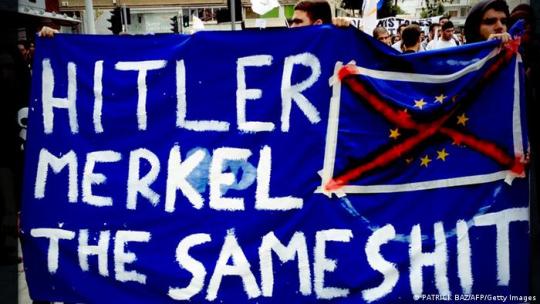
When my english teacher was called a Nazi in the UK and got gifted a box with a swastika in the US since "we like Shitler so much". When Irish think it is funny to sing the whole german national anthem instead of the normal one to german coworkers (which is illegal here), when stupid tourists do the Shitler salute and think of it as a joke (and are surprised when they get arrested and fined).
We cant escape those 12 dark years. And we arent allowed too, we learn about it in school (in south germany, east germany is another story), so that something like that can never happen again! Our government is paying money to holocaust survivors so they can live in comfort. This is our responsibility and we take it very seriously.
I remember being twelve years old and looking at pictures of dead people in Ausschwitz. The place where a part of my family was killed. My other great grandfather got drafted in WW2, he fought because he would be shot if he didnt. Imagine someone calling this man who loved his jewish wife so so much (they met after WW2) a nazi just because he was forced into the army is the worst I ever felt.
0 notes
Text
Download PDF The Great Secret: The Classified World War II Disaster that Launched the War on Cancer EBOOK -- Jennet Conant
The Great Secret: The Classified World War II Disaster that Launched the War on Cancer - Jennet Conant
READ & DOWNLOAD Jennet Conant book The Great Secret: The Classified World War II Disaster that Launched the War on Cancer in PDF, EPub, Mobi, Kindle online. Free book, AudioBook, Reender Book The Great Secret: The Classified World War II Disaster that Launched the War on Cancer by Jennet Conant full book,full ebook full Download.
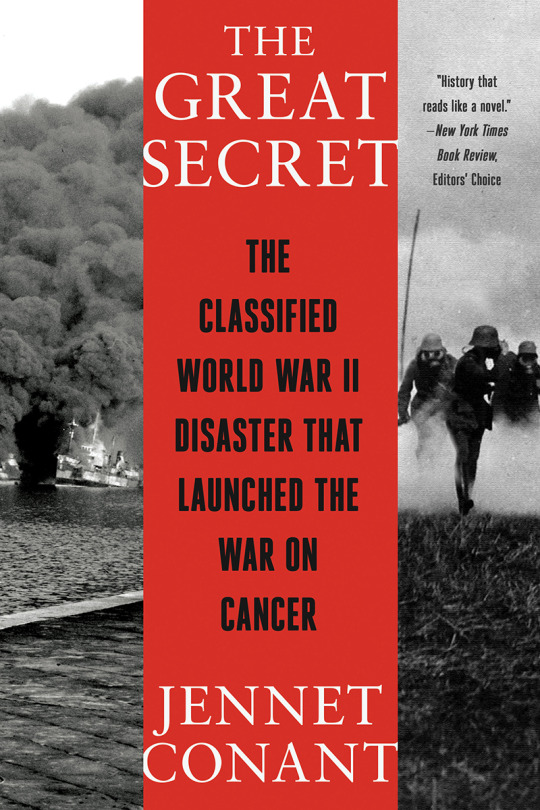
Read / Download The Great Secret: The Classified World War II Disaster that Launched the War on Cancer
DESCRIPTION BOOK : On the night of December 2, 1943, the Luftwaffe bombed a critical Allied port in Bari, Italy, sinking seventeen ships and killing over a thousand servicemen and hundreds of civilians. Caught in the surprise air raid was the John Harvey, an American Liberty ship carrying a top-secret cargo of 2,000 mustard bombs to be used in retaliation if the Germans resorted to gas warfare.When one young sailor after another began suddenly dying of mysterious symptoms, Lieutenant Colonel Stewart Alexander, a doctor and chemical weapons expert, was dispatched to investigate. He quickly diagnosed mustard gas exposure, but was overruled by British officials determined to cover up the presence of poison gas in the devastating naval disaster, which the press dubbed "little Pearl Harbor." Prime Minister Winston Churchill and General Dwight D. Eisenhower acted in concert to suppress the truth, insisting the censorship was necessitated by military security.Alexander defied British port officials and
DETAIL BOOK :
Author : Jennet Conant
Pages : 416 pages
Publisher : W. W. Norton Company
Language :
ISBN-10 : 0393868435
ISBN-13 : 9780393868432
Supporting format: PDF, EPUB, Kindle, Audio, MOBI, HTML, RTF, TXT, etc.
Supporting : PC, Android, Apple, Ipad, Iphone, etc.
================*================
Tag the PDF
- The Great Secret: The Classified World War II Disaster that Launched the War on Cancer by Jennet Conant Ebook PDF
- The Great Secret: The Classified World War II Disaster that Launched the War on Cancer by Jennet Conant PDF Download
- The Great Secret: The Classified World War II Disaster that Launched the War on Cancer by Jennet Conant EPUB
- The Great Secret: The Classified World War II Disaster that Launched the War on Cancer by Jennet Conant EBOOK
- The Great Secret: The Classified World War II Disaster that Launched the War on Cancer by Jennet Conant PDF Online
- The Great Secret: The Classified World War II Disaster that Launched the War on Cancer by Jennet Conant E-BOOK Online
- The Great Secret: The Classified World War II Disaster that Launched the War on Cancer by Jennet Conant PDF Free
- The Great Secret: The Classified World War II Disaster that Launched the War on Cancer by Jennet Conant ebook library
- The Great Secret: The Classified World War II Disaster that Launched the War on Cancer by Jennet Conant pdf document
- The Great Secret: The Classified World War II Disaster that Launched the War on Cancer by Jennet Conant pdf reader
- The Great Secret: The Classified World War II Disaster that Launched the War on Cancer by Jennet Conant ebook creator
- The Great Secret: The Classified World War II Disaster that Launched the War on Cancer by Jennet Conant ebook deals
- The Great Secret: The Classified World War II Disaster that Launched the War on Cancer by Jennet Conant ebook kindle
- Ebook PDF The Great Secret: The Classified World War II Disaster that Launched the War on Cancer by Jennet Conant
- PDF Download The Great Secret: The Classified World War II Disaster that Launched the War on Cancer by Jennet Conant
- EPUB The Great Secret: The Classified World War II Disaster that Launched the War on Cancer by Jennet Conant
- EBOOK The Great Secret: The Classified World War II Disaster that Launched the War on Cancer by Jennet Conant
- PDF Online The Great Secret: The Classified World War II Disaster that Launched the War on Cancer by Jennet Conant
- E-BOOK Online The Great Secret: The Classified World War II Disaster that Launched the War on Cancer by Jennet Conant
- PDF Free The Great Secret: The Classified World War II Disaster that Launched the War on Cancer by Jennet Conant
- ebook library The Great Secret: The Classified World War II Disaster that Launched the War on Cancer by Jennet Conant
- pdf document The Great Secret: The Classified World War II Disaster that Launched the War on Cancer by Jennet Conant
- pdf reader The Great Secret: The Classified World War II Disaster that Launched the War on Cancer by Jennet Conant
- ebook creator The Great Secret: The Classified World War II Disaster that Launched the War on Cancer by Jennet Conant
- ebook deals The Great Secret: The Classified World War II Disaster that Launched the War on Cancer by Jennet Conant
- ebook kindle The Great Secret: The Classified World War II Disaster that Launched the War on Cancer by Jennet Conant
0 notes
Text

EPISODE
SEASON 1
DISC 1
S01E01 THE INFORMER
S01E02 HOLD THAT TIGER
S01E03 KOMMANDANT OF THE YEAR
S01E04 THE LATE INSPECTOR GENERAL
S01E05 THE FLIGHT OF THE VALKYRIE
S01E06 THE PRISONER'S PRISONER
S01E07 GERMAN BRIDGE IS FALLING DOWN
DISC 2
S01E08 MOVIES ARE YOUR BEST ESCAPE
S01E09 GO LIGHT ON THE HEAVY WATER
S01E10 TOP HAT, WHITE TIE AND BOMB SIGHTS
S01E11 HAPPINESS IS A WARM SERGEANT
S01E12 THE SCIENTIST
S01E13 HOGAN'S HOFBRAU
S01E14 OIL FOR THE LAMPS OF HOGAN
DISC 3
S01E15 RESERVATIONS ARE REQUIRED
S01E16 ANCHORS AWEIGH, MEN OF STALAG 13
S01E17 HAPPY BIRTHDAY, ADOLF
S01E18 THE GOLD RUSH
S01E19 HELLO, ZOLLE
S01E20 IT TAKES A THIEF... SOMETIMES
DISC 4
S01E21 THE GREAT IMPERSONATION
S01E22 THE PIZZA PARLOR
S01E23 THE 43RD, A MOVING STORY
S01E24 HOW TO COOK A GERMAN GOOSE WITH RADAR
S01E25 PSYCHIC KOMMANDANT
S01E26 THE PRINCE FROM THE PHONE COMPANY
DISC 5
S01E27 THE SAFECRACKER SUITE
S01E28 I LOOK BETTER IN BASIC BLACK
S01E29 THE ASSASSIN
S01E30 CUPID COMES TO STALAG 13
S01E31 THE FLAME GROWS HIGHER
S01E32 REQUEST PERMISSION TO ESCAPE
SEASON 2
DISC 1
S02E01 HOGAN GIVES A BIRTHDAY PARTY
S02E02 THE SCHULTZ BRIGADE
S02E03 DIAMONDS IN THE ROUGH
S02E04 OPERATION BRIEFCASE
S02E05 THE BATTLE OF STALAG 13
S02E06 THE RISE AND FALL OF SERGEANT SCHULTZ
S02E07 HOGAN SPRINGS
S02E08
S02E09 A KLINK, A BOMB AND A SHORT FUSE
S02E10 TANKS FOR THE MEMORY
S02E11 A TIGER HUNT IN PARIS: PART 1
S02E12 A TIGER HUNT IN PARIS: PART 2
S02E13 WILL THE REAL ADOLF PLEASE STAND UP?
S02E14 FORGET TO WRITE
S02E15 KLINK'S ROCKET
DISC 3
S02E16 INFORMATION PLEASE
S02E17 ART FOR HOGAN'S SAKE
S02E18 THE GENERAL SWAP
S02E19 THE GREAT BRINKSMEYER ROBBERY
S02E20 THE FÜHRER AND PASS THE AMMUNITION
S02E21 HOGAN AND THE LADY DOCTOR
DISC 4
S02E22 THE SWING SHIFT
S02E23 HEIL KLINK
S02E24 EVERYONE HAS A BROTHER-IN-LAW
S02E25 KILLER KLINK
S02E26 REVEREND KOMMANDANT KLINK
S02E27 THE MOST ESCAPE-PROOF CAMP I'VE EVER ESCAPED FROM
DISC 5
S02E28 THE TOWER
S02E29 COLONEL KLINK'S SECRET WEAPON
S02E30 THE TOP SECRET TOP COAT
S02E31 THE RELUCTANT TARGET
SEASON 3
DISC 1
S03E01 THE CRITTENDON PLAN
S03E02 SOME OF THEIR PLANES ARE MISSING
S03E03 D-DAY AT STALAG 13
S03E04 SERGEANT SCHULTZ MEETS MATA HARI
S03E05 FUNNY THING HAPPENED ON THE WAY TO LONDON
S03E06 CASANOVA KLINK
DISC 2
S03E07 HOW TO WIN FRIENDS AND INFLUENCE NAZIS
S03E08 NIGHTS IN SHINING ARMOR
S03E09 HOT MONEY
S03E10 ONE IN EVERY CROWD
S03E11 IS GENERAL HAMMERSCHLAG BURNING A RUSSIAN IS COMING
DISC 3
S03E12 AN EVENING OF GENERALS
S03E13 EVERYBODY LOVES A SNOWMAN
S03E14 THE HOSTAGE
S03E15 CARTER TURNS TRAITOR
S03E16 TWO NAZIS FOR THE PRICE OF ONE
S03E17 IS THERE A DOCTOR IN THE HOUSE?
DISC 4
S03E18 HOGAN, GO HOME
S03E19 STICKY WICKET NEWKIRK
S03E20 WAR TAKES A HOLIDAY
S03E21 DUEL OF HONOR
S03E22 AXIS ANNIE
S03E23 WHAT TIME DOES THE BALLOON GO UP?
DISC 5
S03E24 LEBEAU AND THE LITTLE OLD LADY
S03E25 HOW TO ESCAPE FROM PRISON CAMP WITHOUT REALLY TRYING
S03E26 THE COLLECTOR GENERAL
S03E27 THE ULTIMATE WEAPON
S03E28 MONKEY BUSINESS
S03E29 DRUMS ALONG THE DUSSELDORF
SEASON 4
DISC 1
S04E01 CLEARANCE SALE AT THE BLACK MARKET
S04E02 KLINK VS. THE GONCULATOR
S04E03 HOW TO CATCH A PAPA BEAR
S04E04 HOGAN'S TRUCKING SERVICE... WE DELIVER THE FACTORY TO YOU
S04E05 TO THE GESTAPO WITH LOVE
S04E06 MAN'S BEST FRIEND IS NOT HIS DOG
S04E07 NEVER PLAY CARDS WITH STRANGERS
DISC 2
S04E08 COLOR THE LUFTWAFFE RED
S04E09 GUESS WHO CAME TO DINNER?
S04E10 NO NAMES PLEASE
S04E11 BAD DAY IN BERLIN
S04E12 WILL THE BLUE BARON STRIKE AGAIN?
S04E13 WILL THE REAL COLONEL KLINK PLEASE STAND UP AGAINST THE WALL?
S04E14 MAN IN A BOX
DISC 3
S04E15 THE MISSING KLINK
S04E16 WHO STOLE MY COPY OF MEIN KAMPF?
S04E17 OPERATION HANNIBAL
S04E18 MY FAVORITE PRISONER
S04E19 WATCH THE TRAINS GO BY
S04E20 KLINK'S OLD FLAME
DISC 4
S04E21 UP IN KLINK'S ROOM
S04E22 THE PURCHASING PLAN
S04E23 THE WITNESS
S04E24 THE BIG DISH
S04E25 THE RETURN OF MAJOR BONACELLI
S04E26 HAPPY BIRTHDAY, DEAR HOGAN
SEASON 5
DISC 1
S05E01 HOGAN GOES HOLLYWOOD
S05E02 THE WELL
S05E03 THE KLINK COMMANDOS
S05E04 THE GASOLINE WAR
S05E05 UNFAIR EXCHANGE
S05E06 THE KOMMANDANT DIES AT DAWN
S05E07 BOMBSIGHT
DISC 2
S05E08 THE BIG PICTURE
S05E09 THE BIG GAMBLE
S05E10 THE DEFECTOR
S05E11 THE EMPTY PARACHUTE
S05E12 THE ANTIQUE
S05E13 IS THERE A TRAITOR IN THE HOUSE?
S05E14 AT LAST—SCHULTZ KNOWS SOMETHING
DISC 3
S05E15 HOW'S THE WEATHER?
S05E16 GET FIT OR GO FIGHT
S05E17 FAT HERMANN, GO HOME
S05E18 THE SOFTER THEY FALL
S05E19 GOWNS BY YVETTE
S05E20 ONE ARMY AT A TIME
DISC 4
S05E21 STANDING ROOM ONLY
S05E23 SIX LESSONS FROM MADAME LAGRANGE
S05E24 THE SERGEANT'S ANALYST
S05E25 THE MERRY WIDOW
S05E26 CRITTENDON'S COMMANDOS
S05E27 KLINK'S ESCAPE
SEASON 6
DISC 1
S06E01 CUISINE À LA STALAG 13
S06E02 THE EXPERTS
S06E03 KLINK'S MASTERPIECE
S06E04 LADY CHITTERLY'S LOVER: PART 1
S06E05 LADY CHITTERLY'S LOVER: PART 2
S06E06 THE GESTAPO TAKEOVER
DISC 2
S06E07 KOMMANDANT SCHULTZ
S06E08 EIGHT O'CLOCK AND ALL IS WELL
S06E09 THE BIG RECORD
S06E10 IT'S DYNAMITE
S06E11 OPERATION TIGER
S06E12 THE BIG BROADCAST
DISC 3
S06E13 THE GYPSY
S06E14 THE DROPOUTS
S06E15 EASY COME, EASY GO
S06E16 THE MEISTER SPY
S06E17 THAT'S NO LADY, THAT'S MY SPY
S06E18 TO RUSSIA WITHOUT LOVE
DISC 4
S06E19 KLINK FOR THE DEFENSE
S06E20 THE KAMIKAZES ARE COMING
S06E21 KOMMANDANT GERTRUDE
S06E22 HOGAN'S DOUBLE LIFE
S06E23 LOOK AT THE PRETTY SNOWFLAKES
S06E24 ROCKETS OR ROMANCEEPISODE
SEASON 1
DISC 1
S01E01 THE INFORMER
S01E02 HOLD THAT TIGER
S01E03 KOMMANDANT OF THE YEAR
S01E04 THE LATE INSPECTOR GENERAL
S01E05 THE FLIGHT OF THE VALKYRIE
S01E06 THE PRISONER'S PRISONER
S01E07 GERMAN BRIDGE IS FALLING DOWN
DISC 2
S01E08 MOVIES ARE YOUR BEST ESCAPE
S01E09 GO LIGHT ON THE HEAVY WATER
S01E10 TOP HAT, WHITE TIE AND BOMB SIGHTS
S01E11 HAPPINESS IS A WARM SERGEANT
S01E12 THE SCIENTIST
S01E13 HOGAN'S HOFBRAU
S01E14 OIL FOR THE LAMPS OF HOGAN
DISC 3
S01E15 RESERVATIONS ARE REQUIRED
S01E16 ANCHORS AWEIGH, MEN OF STALAG 13
S01E17 HAPPY BIRTHDAY, ADOLF
S01E18 THE GOLD RUSH
S01E19 HELLO, ZOLLE
S01E20 IT TAKES A THIEF... SOMETIMES
DISC 4
S01E21 THE GREAT IMPERSONATION
S01E22 THE PIZZA PARLOR
S01E23 THE 43RD, A MOVING STORY
S01E24 HOW TO COOK A GERMAN GOOSE WITH RADAR
S01E25 PSYCHIC KOMMANDANT
S01E26 THE PRINCE FROM THE PHONE COMPANY
DISC 5
S01E27 THE SAFECRACKER SUITE
S01E28 I LOOK BETTER IN BASIC BLACK
S01E29 THE ASSASSIN
S01E30 CUPID COMES TO STALAG 13
S01E31 THE FLAME GROWS HIGHER
S01E32 REQUEST PERMISSION TO ESCAPE
SEASON 2
DISC 1
S02E01 HOGAN GIVES A BIRTHDAY PARTY
S02E02 THE SCHULTZ BRIGADE
S02E03 DIAMONDS IN THE ROUGH
S02E04 OPERATION BRIEFCASE
S02E05 THE BATTLE OF STALAG 13
S02E06 THE RISE AND FALL OF SERGEANT SCHULTZ
S02E07 HOGAN SPRINGS
S02E08
S02E09 A KLINK, A BOMB AND A SHORT FUSE
S02E10 TANKS FOR THE MEMORY
S02E11 A TIGER HUNT IN PARIS: PART 1
S02E12 A TIGER HUNT IN PARIS: PART 2
S02E13 WILL THE REAL ADOLF PLEASE STAND UP?
S02E14 FORGET TO WRITE
S02E15 KLINK'S ROCKET
DISC 3
S02E16 INFORMATION PLEASE
S02E17 ART FOR HOGAN'S SAKE
S02E18 THE GENERAL SWAP
S02E19 THE GREAT BRINKSMEYER ROBBERY
S02E20 THE FÜHRER AND PASS THE AMMUNITION
S02E21 HOGAN AND THE LADY DOCTOR
DISC 4
S02E22 THE SWING SHIFT
S02E23 HEIL KLINK
S02E24 EVERYONE HAS A BROTHER-IN-LAW
S02E25 KILLER KLINK
S02E26 REVEREND KOMMANDANT KLINK
S02E27 THE MOST ESCAPE-PROOF CAMP I'VE EVER ESCAPED FROM
DISC 5
S02E28 THE TOWER
S02E29 COLONEL KLINK'S SECRET WEAPON
S02E30 THE TOP SECRET TOP COAT
S02E31 THE RELUCTANT TARGET
SEASON 3
DISC 1
S03E01 THE CRITTENDON PLAN
S03E02 SOME OF THEIR PLANES ARE MISSING
S03E03 D-DAY AT STALAG 13
S03E04 SERGEANT SCHULTZ MEETS MATA HARI
S03E05 FUNNY THING HAPPENED ON THE WAY TO LONDON
S03E06 CASANOVA KLINK
DISC 2
S03E07 HOW TO WIN FRIENDS AND INFLUENCE NAZIS
S03E08 NIGHTS IN SHINING ARMOR
S03E09 HOT MONEY
S03E10 ONE IN EVERY CROWD
S03E11 IS GENERAL HAMMERSCHLAG BURNING A RUSSIAN IS COMING
DISC 3
S03E12 AN EVENING OF GENERALS
S03E13 EVERYBODY LOVES A SNOWMAN
S03E14 THE HOSTAGE
S03E15 CARTER TURNS TRAITOR
S03E16 TWO NAZIS FOR THE PRICE OF ONE
S03E17 IS THERE A DOCTOR IN THE HOUSE?
DISC 4
S03E18 HOGAN, GO HOME
S03E19 STICKY WICKET NEWKIRK
S03E20 WAR TAKES A HOLIDAY
S03E21 DUEL OF HONOR
S03E22 AXIS ANNIE
S03E23 WHAT TIME DOES THE BALLOON GO UP?
DISC 5
S03E24 LEBEAU AND THE LITTLE OLD LADY
S03E25 HOW TO ESCAPE FROM PRISON CAMP WITHOUT REALLY TRYING
S03E26 THE COLLECTOR GENERAL
S03E27 THE ULTIMATE WEAPON
S03E28 MONKEY BUSINESS
S03E29 DRUMS ALONG THE DUSSELDORF
SEASON 4
DISC 1
S04E01 CLEARANCE SALE AT THE BLACK MARKET
S04E02 KLINK VS. THE GONCULATOR
S04E03 HOW TO CATCH A PAPA BEAR
S04E04 HOGAN'S TRUCKING SERVICE... WE DELIVER THE FACTORY TO YOU
S04E05 TO THE GESTAPO WITH LOVE
S04E06 MAN'S BEST FRIEND IS NOT HIS DOG
S04E07 NEVER PLAY CARDS WITH STRANGERS
DISC 2
S04E08 COLOR THE LUFTWAFFE RED
S04E09 GUESS WHO CAME TO DINNER?
S04E10 NO NAMES PLEASE
S04E11 BAD DAY IN BERLIN
S04E12 WILL THE BLUE BARON STRIKE AGAIN?
S04E13 WILL THE REAL COLONEL KLINK PLEASE STAND UP AGAINST THE WALL?
S04E14 MAN IN A BOX
DISC 3
S04E15 THE MISSING KLINK
S04E16 WHO STOLE MY COPY OF MEIN KAMPF?
S04E17 OPERATION HANNIBAL
S04E18 MY FAVORITE PRISONER
S04E19 WATCH THE TRAINS GO BY
S04E20 KLINK'S OLD FLAME
DISC 4
S04E21 UP IN KLINK'S ROOM
S04E22 THE PURCHASING PLAN
S04E23 THE WITNESS
S04E24 THE BIG DISH
S04E25 THE RETURN OF MAJOR BONACELLI
S04E26 HAPPY BIRTHDAY, DEAR HOGAN
SEASON 5
DISC 1
S05E01 HOGAN GOES HOLLYWOOD
S05E02 THE WELL
S05E03 THE KLINK COMMANDOS
S05E04 THE GASOLINE WAR
S05E05 UNFAIR EXCHANGE
S05E06 THE KOMMANDANT DIES AT DAWN
S05E07 BOMBSIGHT
DISC 2
S05E08 THE BIG PICTURE
S05E09 THE BIG GAMBLE
S05E10 THE DEFECTOR
S05E11 THE EMPTY PARACHUTE
S05E12 THE ANTIQUE
S05E13 IS THERE A TRAITOR IN THE HOUSE?
S05E14 AT LAST—SCHULTZ KNOWS SOMETHING
DISC 3
S05E15 HOW'S THE WEATHER?
S05E16 GET FIT OR GO FIGHT
S05E17 FAT HERMANN, GO HOME
S05E18 THE SOFTER THEY FALL
S05E19 GOWNS BY YVETTE
S05E20 ONE ARMY AT A TIME
DISC 4
S05E21 STANDING ROOM ONLY
S05E23 SIX LESSONS FROM MADAME LAGRANGE
S05E24 THE SERGEANT'S ANALYST
S05E25 THE MERRY WIDOW
S05E26 CRITTENDON'S COMMANDOS
S05E27 KLINK'S ESCAPE
SEASON 6
DISC 1
S06E01 CUISINE À LA STALAG 13
S06E02 THE EXPERTS
S06E03 KLINK'S MASTERPIECE
S06E04 LADY CHITTERLY'S LOVER: PART 1
S06E05 LADY CHITTERLY'S LOVER: PART 2
S06E06 THE GESTAPO TAKEOVER
DISC 2
S06E07 KOMMANDANT SCHULTZ
S06E08 EIGHT O'CLOCK AND ALL IS WELL
S06E09 THE BIG RECORD
S06E10 IT'S DYNAMITE
S06E11 OPERATION TIGER
S06E12 THE BIG BROADCAST
DISC 3
S06E13 THE GYPSY
S06E14 THE DROPOUTS
S06E15 EASY COME, EASY GO
S06E16 THE MEISTER SPY
S06E17 THAT'S NO LADY, THAT'S MY SPY
S06E18 TO RUSSIA WITHOUT LOVE
DISC 4
S06E19 KLINK FOR THE DEFENSE
S06E20 THE KAMIKAZES ARE COMING
S06E21 KOMMANDANT GERTRUDE
S06E22 HOGAN'S DOUBLE LIFE
S06E23 LOOK AT THE PRETTY SNOWFLAKES
S06E24 ROCKETS OR ROMANCE
1 note
·
View note
Text
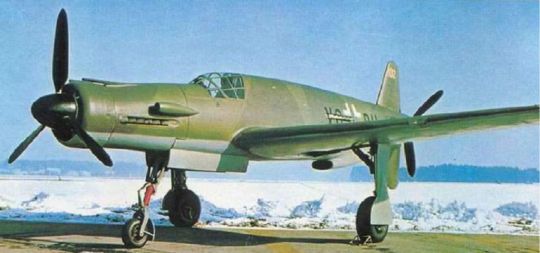
-A Dornier Do 335 Pfeil on a snowy runway, some time in 1944 or '45. | Photo: Luftwaffe
FLIGHTLINE: 181 - DORNIER DO 335 PFEIL ("ARROW")
Initially designed in response to a request for a Schnellbomber, the Do 335 was reconfigured into a multi-role aircraft, though only a few were completed before Germany surrendered.
Claude Dornier founded the Dornier Flugzeugwerke ("Aircraft factory") in 1914, and was renowned for building large, all-metal flying boats as well as land-based passenger aircraft between the Great War and WWII. These included the record-breaking Do 16 Wal ("Whale") of 1924, the Do X of 1929, and the Komet ("Comet") and Merkur ("Mercury"), a favorite of Lufthansa and SCADTA in Colombia, as well as several South American militaries. A feature of many Dornier aircraft were tandem engines, a tractor and a pusher motor placed back to back. This arrangement allowed an aircraft to enjoy the extra power of having multiple engines without the associated drag of having multiple tractor installations. It also alleviated the issue of asymmetric thrust in case of an engine failure.
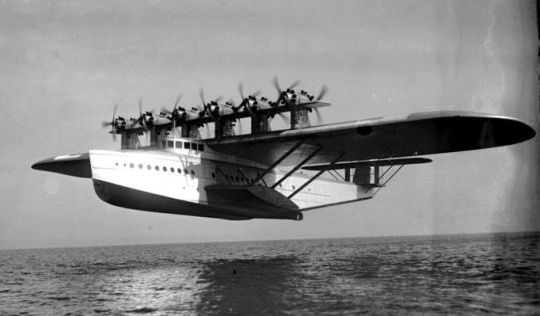
-A Do X in flight, circa January 1932. This was one of a number of Dornier flying boats to have a tandem engine configuration. | Photo: German Federal Archives
DEUTSCHLAND PFEILE
What became the Do 335 originated in 1939, while Dornier was working on the P.59 Schellbomber ("high-speed bomber"), which would have carried and equivalent load to a Ju 88 or Me 410, but featured a tandem engine arrangement. Work on the P.59 was cancelled in 1940, but Dornier had already commissioned a test aircraft, the Göppingen Gö 9, to test the feasibility of connecting a pusher prop via an extended drive shaft. The Go 9 was based on the Do 17 bomber, but scaled down 40% and with a cruciform tail. The test plane validated Dornier's designs, though the eventual fate of the Go 9 is not known (likely though, it was destroyed by Allied bombing or recycled).
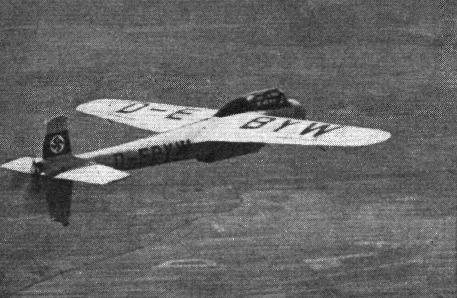
-The Göppingen Gö-9 motor glider, designed by Wolf Hirth. flying c.1941. | Photo: Flightglobal
The P.59's general design was resurrected in 1942 when the RLM requested a high-speed bomber with a 1,000kg payload. Dornier submission, designated the P.231, was awarded a development contract and the model number Do 335. Late in 1942, the requirements were changed from a Schnellbomber to a multirole fighter, which resulted in extensive delays while the designs were updated.
FLUGZEUGSPEZIFIKATIONEN
The Do 335 was 13.85m long, with a wingspan of 13.8m and a height of 5m. Empty, the plane weighed 7,260kg, while at max TO the weight was 9,600kg (10,000kg for the two-seat trainers and night fighter variants). Power was provided by two Daimler-Benz DB 603E-1 liquid-cooled V-12s developing 1,324kW each. Due to the situation in late-war Germany, the engines were fitted to run on 87 octane "B4" lignite-derived synthetic fuel, and MW50 boost was also available for additional speed. The basic fighter/bomber variant was armed with a singe 30mm MK 103 cannon firing through the spinner and two 20mm MG 151/20 autocannon mounted in the front engine cowl and synchronized to fire through the prop disc. A single 500kg bomb could be carried internally, and two pylons on the wings could be fitted with bombs, gun pods or drop tanks, with a total load of 100kg. During flight tests, the Do 335 hit 763kmh with boost (686kmh without), making it the fastest production fighter the Luftwaffe fielded during WWII. Under single-engine operations, the plane could still fly at 563kmh. Service ceiling was 11,400m, and under ideal conditions the plane could climb to 8,000m in 14 minutes 30 seconds. Due to concerns over a pilot striking the dorsal fin or the rear prop (a common concern in pusher designs before ejector seats became common), explosive charges would sever the fin and propeller before the pilot would bail out.
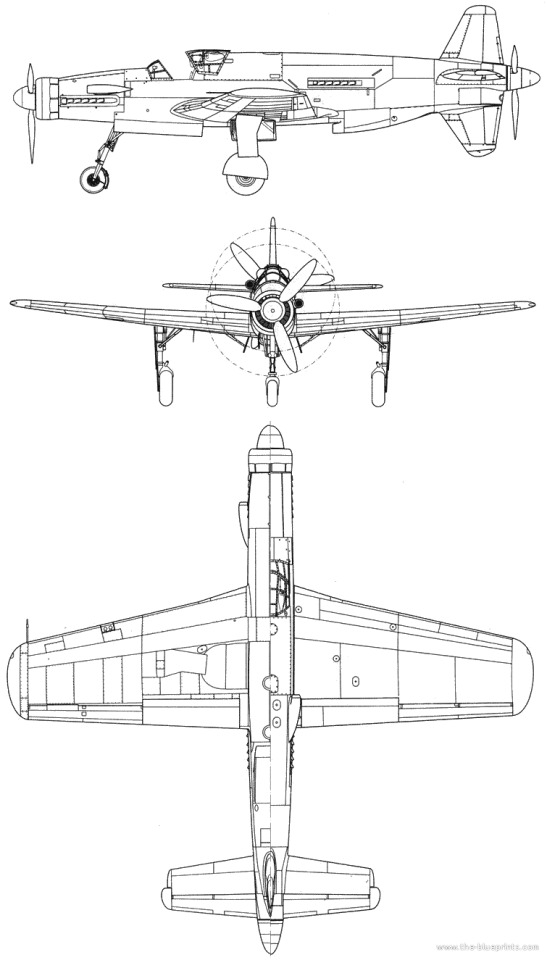
-Orthograph of the Do 335 A-1. | Illustration: Richard Ferriere
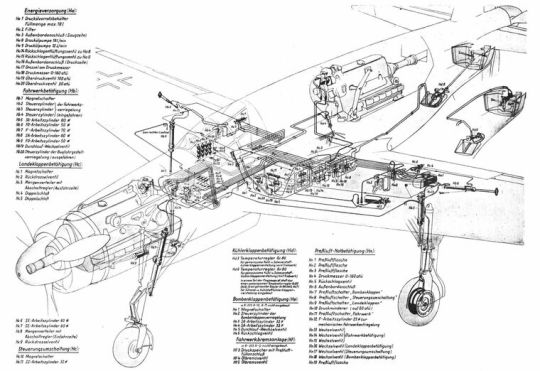
-Cutaway drawing of the Pfeil showing the engines, linkages, and landing gear actuators. | Illustration: Dornier

-Mounting locations of the 335's guns and associated equipment. | Illustration: Dornier
Maiden flight of the Do 335 V1 prototype was on 26 October 1943. A total of 27 flights were made with the V1, which uncovered a weakness in the landing gear, and issues with the main landing gear wheel-well doors saw them removed for the majority of the flights. The second aircraft, V2, first flew on 31 December 1943, and featured uprated DB 603A-2 engines as well as aerodynamic changes informed by the V1's test flights as well as wind tunnel tests. Maiden flight of the V3 pre-production aircraft was on 20 January 1944, which was fitted with DB 603G-0 engines, which produced 1,400kW at take off. The V3 was also fitted with two rear-view mirrors, alleviating blind spots caused by the location of the aft engine. A total of ten preproduction aircraft were then ordered, and in January the RLM ordered five more prototypes of the night fighter variant, later designated the A-6. By war's end, at least 16 prototypes of the Do 335 and related programs had flown, accumulating some 60 flight hours.

-The Do 335 V1 during testing in 1943 or '44. | Photo: Luftwaffe
Production of the Do 335 was given maximum priority under Hitler's Jägernotprogramm (Emergency Fighter Program), issued on 23 May 1944, and the competing He 219 Uhu ("eagle-owl") Nachtjäger theoretically freed up needed DB 603 engines for the Pfeil, but in practice Heinkel continued production of the 219A. Dornier's factories in Friedrichshafen and Munchen were anticipated to produce 120 and 2,000 Do 335s, of various configurations, by March 1946, but an Allied attack on Friedrichshafen destroyed tooling for the Pfeil, which resulted in a new line being set up in Oberpfaffenhofen. The first preproduction Do 335 A-0 model was delivered in July 1944, and construction of the first production A-1 model began in late 1944. As the war progressed, various models of the Do 335 proliferated (as happened often with late-war aircraft programs) as the Nazis sought to turn back the Allied forces:
Do 335 A-2: single-seat fighter-bomber aircraft with new weapon sights, later proposed longer wing and updated 1,471 kW (1,973 hp) DB603L engines.
Do 335 A-3: single-seat reconnaissance aircraft built from A-1 aircraft, later proposed with longer wing.
Do 335 A-4: single-seat reconnaissance aircraft with smaller cameras than the A-3
Do 335 A-5: single-seat night fighter aircraft, later night and bad weather fighter with enlarged wing and DB603L engines.
Do 335 A-6: two-seat night fighter aircraft, with completely separate second cockpit located above and behind the original.
Do 335 A-7: A-6 with longer wing.
Do 335 A-8: A-4 fitted with longer wing.
Do 335 A-9: A-4 fitted with longer wing, DB603L engines and pressurized cockpit.
Do 335 A-11/12: A-0 refitted with a second cockpit to serve as trainers.
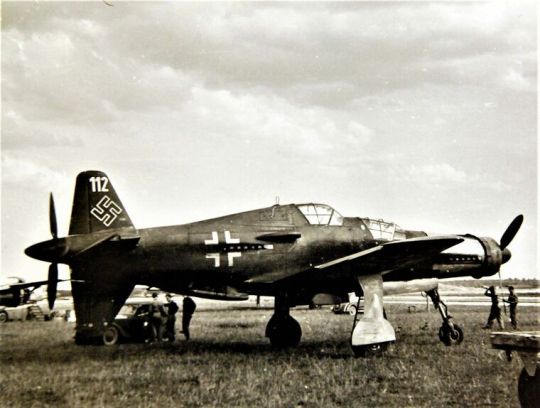
-A Do 335 A-12 trainer, known as the Ameisenbär ("anteater"), late in the war. | Photo: Luftwaffe
Do 335 B-1: abandoned in development.
Do 335 B-2: single-seat destroyer aircraft. Fitted with 2 additional MK 103 in the wings and provision to carry two standard Luftwaffe 300 litre (80 US gal) drop tanks.
Do 335 B-3: updated B-1 but with longer wing.
Do 335 B-4: update of the B-1 with longer wing, DB603L engine.
Do 335 B-6: night fighter.
Do 335 B-12: dual-seat trainer version for the B-series aircraft.
Do 435: a Do 335 with the redesigned, longer wing. Allied intelligence reports from early May 1945 mention spotting a Do 435 at the Dornier factory airfield at Lowenthal.
Do 535: actually the He 535, once the Dornier P254 design was handed over to Heinkel in October 1944; fitted with jet engine in place of rear piston engine.
Do 635: twin-fuselaged long-range reconnaissance version. Also called Junkers Ju 635 or Do 335Z. Mock up only.
P 256: turbojet nightfighter version, with two podded HeS 011 turbojet engines; based on Do 335 airframe.
In April 1945 the Allies captured the Oberpfaffenhofen factory in late April 1945, capturing 11 A-1 fighter/bombers and 2 A-12 trainers. That same month, a flight of four RAF Hawker Tempests, led by French ace Pierre Clostermann, encountered an unknown model of Do 335 over northern Germany at low altitude. The Pfeil pilot began evasive maneuvers, but Clostermann opted to not give chase as the enemy plane displayed superior speed. At the time of the German capitulation in 1945, 22 Do 335A-0, A-1 and A-11/12 aircraft were known to have been completed.
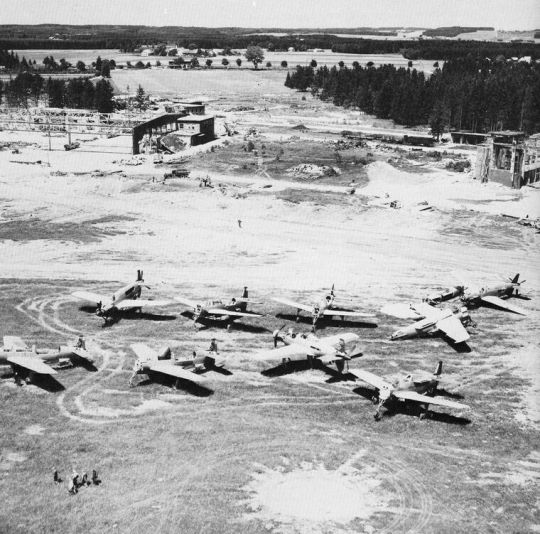
-Dornier Do 335 aircraft on the runway at Oberpfaffenhofen just after the end of the Second World War. | Photo: USAAF
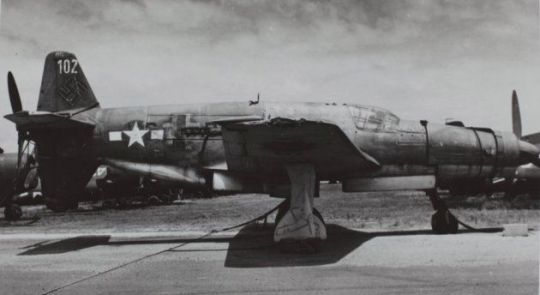
-A Do 335 after being captured by the US, with American markings painted over the Luftwaffe ones. | Photo: Charles Daniels Collection/SDASM Archives
At least two Do 335s were brought to the US under Operation LUSTY, with one, Do 335 A-0, designated A-02, with construction number (Werknummer) 240 102, and Stammkennzeichen ("factory radio code registration") VG+PH being claimed by the Navy for testing. The aircraft was transported on HMS Reaper along with other captured German aircraft, then shipped to the Navy's Test and Evaluation center at NAS Pax River. Another Pfeil was tested by the USAAF at Freeman Field in Indiana, but nothing is known about its fate. In 1961 VG+PH was transferred to the Smithsonian Institution, though it remained outside at NAS Oceana until 1974, when it was shipped back to the Dornier factory in Oberpfaffenhofen for restoration. Over the next year, volunteers from Dornier (some of whom worked on the aircraft originally) found that the explosive charges meant to sever the tail and aft prop were still installed and live, thirty years later. After work was completed the aircraft was placed on display at the Hannover Airshow from 1 to 9 May 1976, and afterwards it was on loan to the Deutsches Museum until 1988. The aircraft was shipped back the States after that, and is now on display at the Udvar-Hazy Center along with other German aircraft brought over during Lusty like the only known Ar 234 Blitz jet bomber and the partially restored He 219A Uhu.
#aircraft#aviation#avgeek#airplanes#airplane#aviation history#ww2 history#ww2 german aircraft#ww2 aircraft#ww2#ww 2 aircraft#ww 2#wwii history#wwii aircraft#wwiii#ww ii#ww ii aircraft#secret project#secret weapons of the Luftwaffe#luftwaffe#wonder weapons
38 notes
·
View notes
Text
Favorite flight combat game of your liking?
To any “flyboys/flygirls” out there, have you played any of these air/space combat games in your gaming lifetime, and if you did and loved at least one of them, please tell why? (Please note that games like Wing Commander, War Thunder, the X-Universe, Freelancer, and some others aren’t included because I haven’t checked them out yet.
The games are: a) Star Wars: TIE Fighter and X-Wing Alliance (X-Wing and X-Wing vs. TIE Fighter included if possible)
b) Star Wars: Rogue Squadron I and II: Rogue Leader (feel free to talk about Ep. I: Battle for Naboo and RSIII: Rebel Strike, however)
c) FreeSpace 2 (community mods like FSPort, Silent Threat: Reborn, Derelict, and Blue Planet included)
d) Ace Combat games set in Strangereal (Air Combat, 2, 3: Electrosphere - Japan/English fan sub version, 04: Shattered Skies, 5: The Unsung War, Zero: The Belkan War, 6: Fires of Liberation, X: Skies of Deception, and 7: Skies Unknown are worth mentioning)
e) Project Wingman
f) Secret Weapons of the Luftwaffe
g) IL-2 Sturmovik (1946/Complete Edition is preferable, although the other games are still worth noting)
h) Secret Weapons over Normandy
i) Crimson Skies
Feel free to comment when it comes to other flight combat games and more.
#Video Game Polls#video games#gaming#star wars#star wars legends#x-wing#tie fighter#freespace#freespace 2#ace combat#project wingman#il-2 sturmovik#secret weapons of the luftwaffe#lucasarts#bandai namco#secret weapons over normandy#crimson skies#zipper interactive#microsoft#pc gaming#console gaming#volition#factor 5
53 notes
·
View notes
Photo

Computer Gaming World December 1990
Lucasfilm Games’s latest World War II combat flight simulator, just perhaps an anticipation of the Lucasfilm production made two decades later Red Tails, was featured on this issue’s cover. There was also an enthusiastic first look at Wing Commander, a combat flight simulator “futuristic” in a different way, and Scorpia’s regular adventure game column offered a gently hinted walkthrough of the Lucasfilm Games adventure The Secret of Monkey Island.
#computer magazine cover#computer gaming world#secret weapons of the luftwaffe#gotha 229#p-51 mustang#me-262#b-17 flying fortress
2 notes
·
View notes
Photo


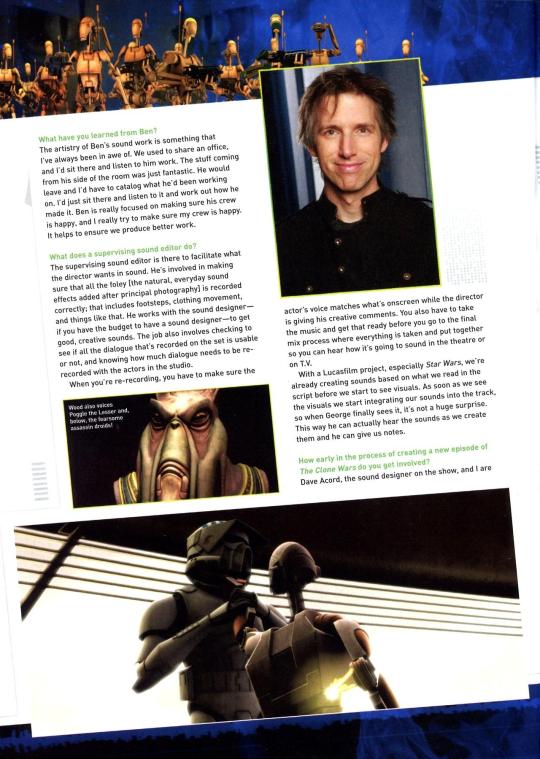

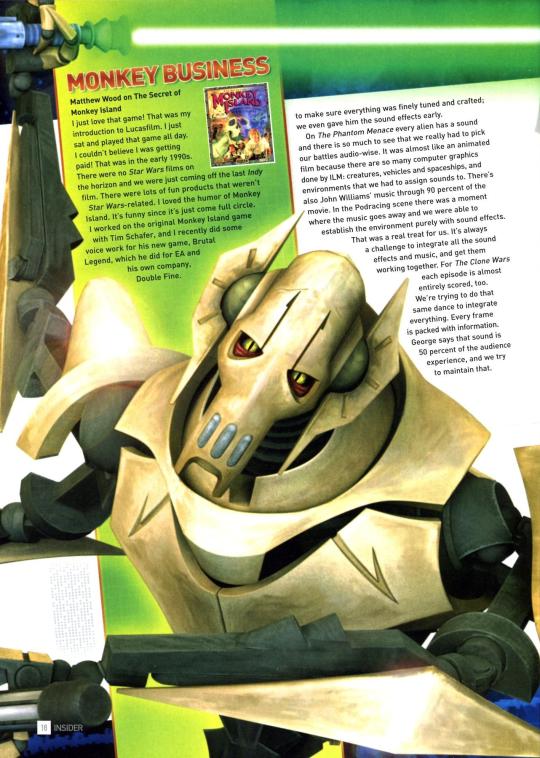

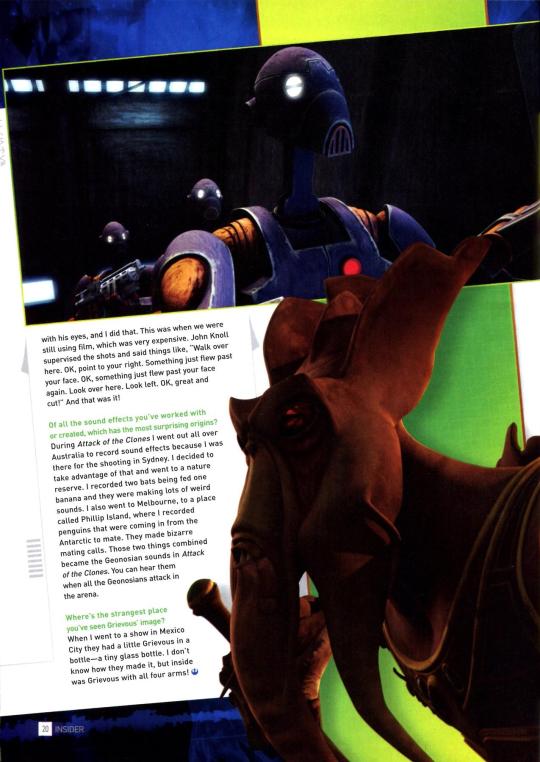
TALES OF A SOUND DROID (#116, APR 2010)
Star Wars: The Clone Wars Supervising Sound Editor Matthew Wood tells James Burns about his career and life as General Grievous!
Star Wars Insider: When did you start working in sound?
Matthew Wood: I was 17 years old when I started working at Lucas Arts, or Lucasfilm Games as it was called back then. I worked there for about a year as a tester on games like The Secret of Monkey Island, Indiana Jones and the Last Crusade, Night Shift, and Secret Weapons of the Luftwaffe. I became aware that there was a position opening up at Skywalker Sound to test a program George Lucas was putting together called SoundDroid. This was the first non-linear digital sound editor for film, and I ended up using some of the software that I’d put together at the games division Skywalker Sound. We ended up using that technology on The Young Indiana Jones Chronicles.
I got in really early when things transferring over from analog magnetic tape editing to digital, so I got to learn the craft of editing and design from masters in the field and taught them something about computers. It was a nice symbiotic relationship, as Obi-wan likes to say. I became a supervising s editor, and had an “field” promotion from Rick McCallum on The Phantom Menace. Ben Burtt has been one of my mentors and also an idol of mine. We have a great working relationship, so in 2008 it was really fun when we got award nominatios on WALL-E together. To be nominated with him was a dream come true for me.
What have you learned from Ben?
The artistry of Ben’s sound work is something that I’ve always been in awe of. We used to share an office and I’d sit there and listen to him work. The stuff coming from his side of the room was just fantastic. He wot leave and I’d have to catalog what he’d been working on. I’d just sit there and listen to it and work out how he made it. Ben is really focused on making sure his crew is happy, and I really try to make sure my crew is happy. It helps to ensure we produce better work.
What does a supervising sound editor do?
The supervising sound editor is there to facilitate what the director wants in sound. He’s involved in making sure that all the foley [the natural, everyday sound effects added after principal photography] is recorded correctly; that includes footsteps, clothing movement and things like that. He works with the sound designer—if you have the budget to have a sound designer—to get good, creative sounds. The job also involves checking to see if all the dialogue that’s recorded on the set is usable or not, and knowing how much dialogue needs to be recorded with the actors in the studio.
When you’re re-recording, you have to make sure the actor’s voice matches what’s onscreen while the director is giving his creative comments. You also have to take the music and get that ready before you go to the final mix process where everything is taken and put together so you can hear how it’s going to sound in the theatre of on T.V.
With a Lucasfilm project, especially Star Wars, we’re already creating sounds based on what we read in the script before we start to see visuals. As soon as we see the visuals we start integrating our sounds into the track, so when George finally sees it, it’s not a huge surprise. This way he can actually hear the sounds as we create them and he can give us notes.
How early in the process of creating a new episode of The Clone Wars do you get involved?
Dave Acord, the sound designer on the show, and I are working on it the whole time. We’re making an episode and mixing it every other week, and we’re normally working on one or two shows at a time. We also do voices in the show. I do Grievous and a bunch of other characters—all the battle droids, commando droids, some tactical droids, the super battle droids, some assassin droids, Wat Tambor and Poggle the Lesser! We’re already recording for Season Three and right now [October 2009] we’re only about halfway through post-production on Season Two.
What are the specific challenges working on Star Wars compared to other projects you’ve worked on, such as There Will Be Blood?
Star Wars is very challenging because it has so much material in each frame. To just compare The Phantom Menace with There Will Be Blood—in the first 20 minutes of There Will Be Blood there’s no dialogue at all. We just created the soundscape from [composer] Jonny Greenwood’s music. Chris Scarabosio, the sound designer, was a Star Wars alumni with whom I’d worked for a long time. We worked with the director, Paul Thomas Anderson, to make sure everything was finely tuned and crafted; we even gave him the sound effects early.
On The Phantom Menace every alien has a sound and there is so much to see that we really had to pick our battles audio-wise. It was almost like an animated film because there are so many computer graphics done by ILM: creatures, vehicles and spaceships, and environments that we had to assign sounds to. There’s also John Williams’ music through 90 percent of the movie. In the Podracing scene there was a moment (where the music goes away and we were able to establish the environment purely with sound effects. That was a real treat for us. It’s always a challenge to integrate all the sound effects and music, and get them working together. For The Clone Wars each episode is almost entirely scored, too. We’re trying to do that same dance to integrate everything. Every frame is packed with information. George says that sound is 50 percent of the audience experience, and we try to maintain that.
Going back to voices, have you approached General Grievous any differently in the series from the way you did in Episode III?
In Revenge of the Sith most of Grievous’ lines are yelled, so I had to adjust because we have some scenes in The Clone Wars where he’s actually speaking to people! I’ve had to find a happy medium with the performance. Intelligibility is a too because I have to make sure the television audience can hear the fidelity of what I’m saying because the voice is very heavily processed and it undergoes screen modulation and pitch processing. Otherwise the performances are the same. I have a lot fun doing the battle droids; I like the arc of their characters. Dave [Filoni] noted that there’s a lot less “Roger, Roger” in in Season Two.
You also played Bib Fortuna in The Phantom Menace.
That was a “right place, right time” thing. I was working in editorial and Robin Gurland [casting director] and George were sitting there, and they realized they wanted to put Bib into the Podrace scene with Jabba. They’d shot Bib in some Senate scenes where he was played by Alan Ruscoe. They said that my face matched Alan’s, so I was sent to ILM. I put on all the latex pieces that were made for Alan and we shot the scene. It was just me and some light stands. When I was dressed I thought of how Michael Carter played the character in Return of the Jedi, all sort of intense with his eyes and I did that. This was when we were still using film, which was very expensive. John Knoll supervised the shots and said things like, “Walk over here. OK, point to your right. Something just flew past your face. OK, something just flew past your face again. Look over here. Look left. OK, great and cut!” And that was it!
Of all the sound d effects you’ve worked with or created, which has the most surprising origins?
During Attack of the Clones I went out all over Australia to record sound effects because I was there for the shooting in Sydney. I decided to take advantage of that and went to a nature reserve. I recorded two bats being fed one banana and they were making lots of weird sounds. I also went to Melbourne, to a place call Phillip Island, where I recorded penguins that were coming in from the Antarctic to mate. They made bizarre mating calls. Those two things combined became the Geonosian sounds in Attack of the Clones. You can hear them when all the Geonosians attack in the arena.
Where’s the strangest place you’ve seen Grievous’ image?
When I went to a show in Mexico City, they had a little Grievous in a glass bottle. I don’t know how they made it, but inside was Grievous with all four arms!
36 notes
·
View notes
Text
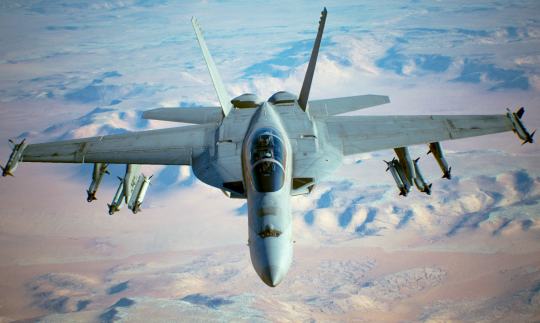
Tensions in Ukraine are a reminder of Germany's nuclear role in NATO, which will soon depend on 30 Super Hornet jets
Fernando Valduga By Fernando Valduga 02/13/22 - 11:06 am in Military
Russia's military pressure on Ukraine has put Germany in a difficult situation. Some critics in the West characterized Berlin's containment in the crisis as evidence that Germany is not a reliable ally.
These accusations generally neglect the restrictions under which Chancellor Olaf Scholz's government must operate, some of which are the product of Germany's troubled history as a military power.
Critics also tend to ignore many of Germany's concrete contributions to the Western Alliance.
For example, there was no mention in recent media coverage of the fact that Germany hosts nuclear weapons on its territory and, in a war, its air force can be called upon to deliver these weapons against targets in the East.
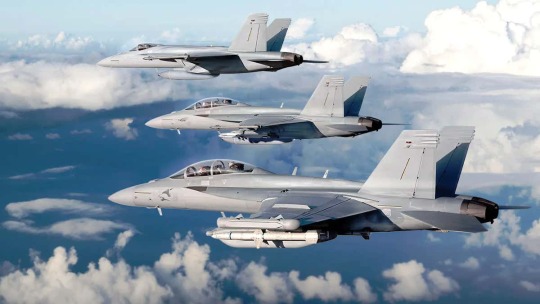
Growler and Super Hornet.
The weapons, representing perhaps one fifth of the 150 "tactical" nuclear systems that NATO stores in Western Europe, are located at a secret base near the Belgian border.
In the event of a contingency that required nuclear use, the weapons or part of them would be armed and released by their American manipulators for use in Tornado Germany fighter-bombers.
It is a controversial mission, but with which Berlin has repeatedly confirmed its commitment.
Compared to sending weapons to Ukraine or renouncing the use of the Nordstream 2 pipeline, Germany's nuclear role is much greater in Western efforts to prevent aggression from the east.
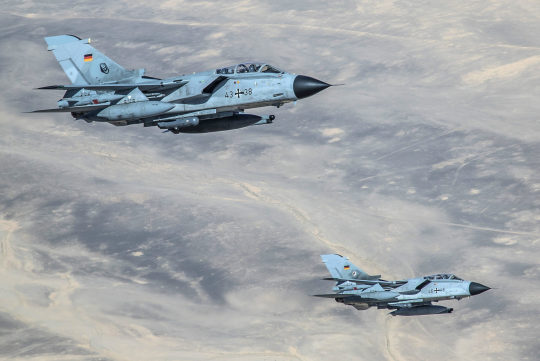
Tornado ECR (46+46) and IDS (43+38) fly over Jordan.
However, in order for Berlin to continue playing its nuclear role within the alliance, the former Tornadoes - which first flew more than 40 years ago - need to be replaced soon.
In addition to their age, aircraft are becoming less capable of penetrating modern air defenses, thus undermining their credibility as a last resort deterrent.
In April 2020, the German government informed Washington that it would make a mixed purchase of new tactical aircraft that included 30 nuclear-capable F/A-18E/F Super Hornet fighter jets and 15 EA-18G Growler electronic warfare aircraft.
The Super Hornets would replace the Tornados on nuclear paper by 2030, and the Growlers would provide electronic interference to German military aircraft and other allies - including support from the Super Hornets on possible nuclear missions.

Super Hornet in Luftwaffe colors.
Both aircraft are manufactured by Boeing and reflect a balanced approach to the aircraft's survivability that includes reduced radar returns, suppression of enemy defenses and improved ballistic protection.
In the limited amount of time remaining before Tornadoes must retire, these systems are probably the only way to ensure the continuity of Germany's nuclear role until the middle of the century.
The reason is that although Germany also operates Eurofighter Typhoon tactical aircraft with similar performance characteristics, it would take a long time to equip and certify them to take on Tornado's nuclear role.
The Super Hornet will also have to be certified for nuclear operations, but is derived from Hornet's previous structure, which is already certified, and the two aircraft have wide similarity in their projects.
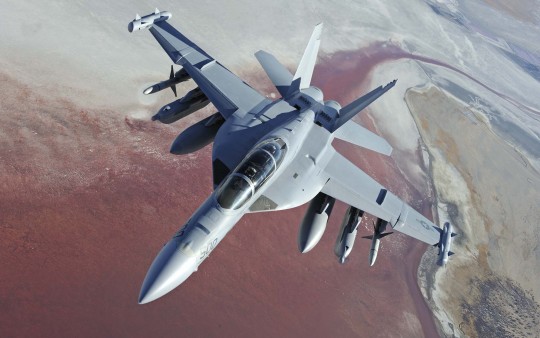
EA-18G Growler.
The U.S. government signaled that the Super Hornet can be prepared for nuclear paper quickly, while Typhoon certification would take much longer - approximately 3-5 years.
The first Super Hornets with nuclear capacity should be ready for delivery in Germany in 2026.
Similar limitations apply to Growler: any effort to equip a different fuselage with the type of electronic interference and attack capabilities residing in the EA-18G would take a long time, potentially compromising NATO's electronic warfare mission.
Some observers of Berlin's decision to buy Super Hornet and Growler were surprised that the stealthy F-35 fighter was excluded from consideration, but therein lies one of the many restrictions that shape Germany's military policy.
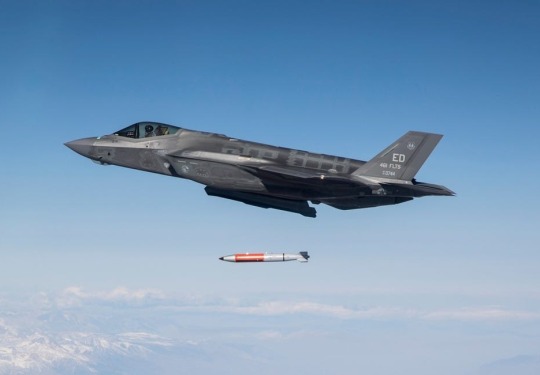
F-35 during launch tests of the B-61 nuclear bomb.
European industry intends to start developing a next-generation tactical aircraft in the 2030s, and Germany's regional partners have clearly indicated that the purchase of the F-35 would unveil the prospects for any such project.
Thus, Berlin chose to buy Super Hornet and Growler as a bridge to the next generation capable of meeting its immediate need for a replacement with Tornado's nuclear capacity.
It's not just about politics: President Trump's frequent criticism of NATO allies has strengthened the European desire to preserve an industrial base of native tactical aircraft.
Super Hornet has thus become the most attractive solution to the challenge of sustaining the nuclear mission without undermining European unity.
There was no public disclosure that President Biden and Chancellor Scholz discussed Germany's nuclear role in NATO during the Chancellor's visit to the White House on Monday.
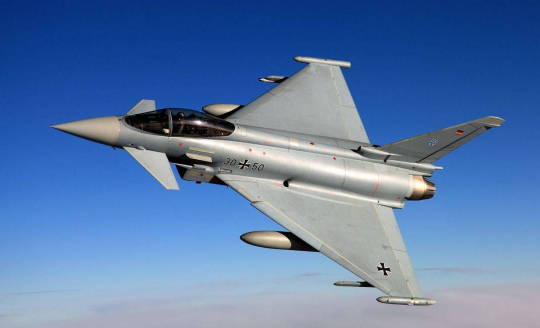
Luftwaffe Eurofighter.
If Scholz is having doubts about it, it would definitely have arisen.
Therefore, it seems that Germany will continue to host nuclear weapons on its soil and prepare for their wartime use in Super Hornets purchased from the US.
At this point, this is the only practical way to avoid a gap in German nuclear capabilities, and demonstrates that Germany really takes the common cause seriously with its American partner when the chips are bad.
Source: Forbes
Tags: Military AviationF/A-18E/F
Fernando Valduga
Aviation photographer and pilot since 1992, has participated in several air events and operations, such as Cruzex, AirVenture, Dayton Airshow and FIDAE. He has works published in specialized aviation magazines in Brazil and abroad. He uses Canon equipment during his photographic work around the world of aviation.
Cavok Brasil - Digital Tchê Web Creation
6 notes
·
View notes
Photo

UK 1991
#UK1991#US GOLD#LUCASARTS#NEW WORLD COMPUTING#SSI#ADVENTURE#SIMULATION#RPG#LICENSED#DUNGEONS & DRAGONS#IBM#AMIGA#ATARIst#MACINTOSH#FM TOWNS#SNES#SEGA CD#TURBOGRAFX CD#SHADOW SORCERER#SECRET WEAPONS OF THE LUFTWAFFE#MIGHT AND MAGIC III ISLES OF TERRA#THE SECRET OF MONKEY ISLAND
16 notes
·
View notes
Photo


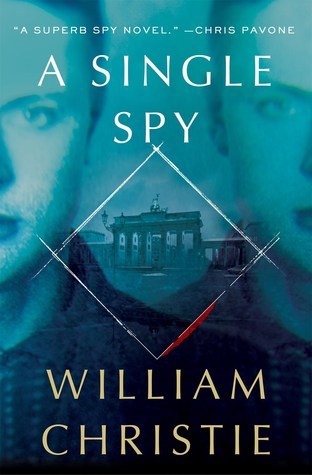

Historical Fiction: Thrilling Stories
The Secret Guests by Benjamin Black
As London endures nightly German bombings, Britain's secret service whisks the princesses Elizabeth and Margaret from England, seeking safety for the young royals on an old estate in Ireland.
Ahead of the German Blitz during World War II, English parents from every social class sent their children to the countryside for safety, displacing more than three million young offspring. In The Secret Guests, the British royal family takes this evacuation a step further, secretly moving the princesses to the estate of the Duke of Edenmore in "neutral" Ireland.
A female English secret agent, Miss Celia Nashe, and a young Irish detective, Garda Strafford, are assigned to watch over "Ellen" and "Mary" at Clonmillis Hall. But the Irish stable hand, the housemaid, the formidable housekeeper, the Duke himself, and other Irish townspeople, some of whom lost family to English gunshots during the War of Independence, go freely about their business in and around the great house. Soon suspicions about the guests' true identities percolate, a dangerous boredom sets in for the princesses, and, within and without Clonmillis acreage, passions as well as stakes rise.
Benjamin Black, who has good information that the princesses were indeed in Ireland for a time during the Blitz, draws readers into a novel as fascinating as the nascent career of Miss Nashe, as tender as the homesickness of the sisters, as intriguing as Irish-English relations during WWII, and as suspenseful and ultimately action-packed as war itself.
Three Hours In Paris by Cara Black
In June of 1940, when Paris fell to the Nazis, Hitler spent a total of three hours in the City of Light—abruptly leaving, never to return. To this day, no one knows why.
Kate Rees, a young American markswoman, has been recruited by British intelligence to drop into Paris with a dangerous assignment: assassinate the Führer. Wrecked by grief after a Luftwaffe bombing killed her husband and infant daughter, she is armed with a rifle, a vendetta, and a fierce resolve. But other than rushed and rudimentary instruction, she has no formal spy training. Thrust into the red-hot center of the war, a country girl from rural Oregon finds herself holding the fate of the world in her hands. When Kate misses her mark and the plan unravels, Kate is on the run for her life—all the time wrestling with the suspicion that the whole operation was a set-up.
A Single Spy by William Christie
Aleksi Ivanovich Smirnov, an orphan and a thief, has been living by his wits and surviving below the ever-watchful eye of the Soviet system until his luck finally runs out. In 1936, at the age of 16, Aleksi is caught by the NKVD and transported to Moscow. There, in the notorious headquarters of the secret police, he is given a choice: be trained and inserted as a spy into Nazi Germany under the identity of his best friend, the long lost nephew of a high ranking Nazi official, or disappear forever in the basement of the Lubyanka. For Aleksi, it’s no choice at all.
Over the course of the next seven years, Aleksi has to live his role, that of the devoted nephew of a high Nazi official, and ultimately works for the legendary German spymaster Wilhelm Canaris as an intelligence agent in the Abwehr. All the while, acting as a double agent—reporting back to the NKVD and avoiding detection by the Gestapo. Trapped between the implacable forces of two of the most notorious dictatorships in history, and truly loyal to no one but himself, Aleksi’s goal remains the same—survival.
In 1943, Aleksi is chosen by the Gestapo to spearhead one of the most desperate operations of the war—to infiltrate the site of the upcoming Tehran conference between Churchill, Roosevelt, and Stalin, and set them up to be assassinated. For Aleksi, it’s the moment of truth; for the rest of the world, the future is at stake.
Under Occupation by Alan Furst
From the master of espionage and intrigue, this novel about heroic resistance fighters in 1942 occupied Paris is based on true events of Polish prisoners in Nazi Germany, who smuggled valuable intelligence to Paris and the resistance.
Occupied Paris in 1942, a dark, treacherous city now ruled by the German security services, where French resistance networks are working secretly to defeat Hitler. Just before he dies, a man being chased by the Gestapo hands off to Paul Ricard a strange looking drawing. It looks like a part for a military weapon; Ricard realizes it must be an important document smuggled out of Germany to aid the resistance. As Ricard is drawn deeper and deeper into the French resistance network, his increasingly dangerous assignments lead him to travel to Germany, and along the underground safe houses of the resistance--and to meet the mysterious and beautiful Leila, a professional spy.
#fiction#historical fiction#history#WWII#WWI#war stories#adult fiction#book recs#to read#tbr#booklr#library#historical stories#thrillers#reading recommendations#recommended reading
24 notes
·
View notes
Text
Hogan’s Background
This is only my personal headcanon but here’s my take on what Hogan’s background and childhood was like.
Based on what we are shown about him, I think Hogan comes from what is now called a broken home. I don’t know if his parents were actually divorced (the 1920s did see a spike in the divorce rates in America although it still carried a heavy stigma and the burden was on the woman) but I suspect his father probably cheated frequently on his mother. This is where he got his attitude about women and marriage and where he learned to lie to them to get what he wanted. Children learn by example.
I’m basing this headcanon on several things. The first is the contrast between the way Hogan talks about women and the way he treats them, at least the women on his side.
To hear Hogan talk, he is incredibly misogynistic, especially by today’s standards. To site just a few examples he tells Klink in Cupid comes to Stalag 13 to lie to a woman to get her into bed and that
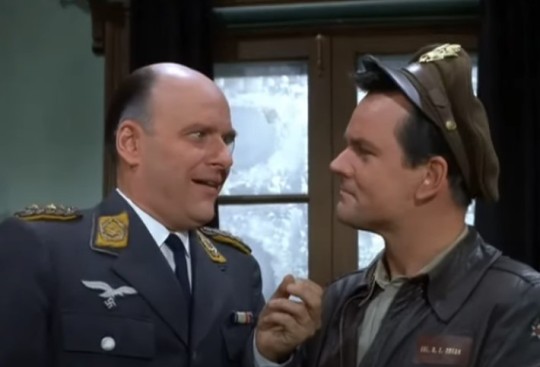
“I can take [women] or leave them alone. To be honest with you, I’ve taken more than I’ve left alone.”
When Schultz gets into trouble with the Gestapo spy in Schultz meets Mata Hari he tells Schultz

“That’s what I’ve always said Schultz, you can’t trust women in war time.” When Schultz replies “In peace time either.”, Hogan says “I also said that.”
In Request Permission to Escape when Carter gets that Dear John letter he tells him
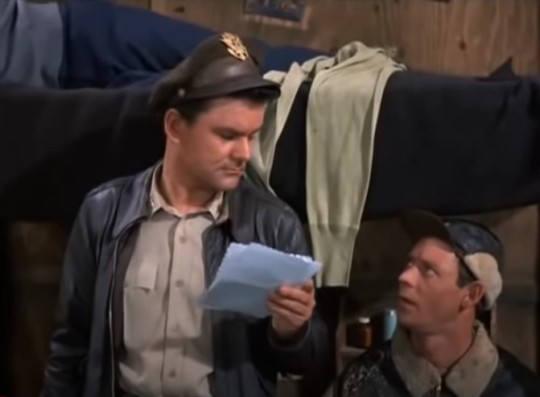
“Come on, forget it. Write her off”
I won’t even go into Gertrude Linkmeyer because everyone slags off against her, even her own brother calls her ugly.
But when it comes to how he actually treats women, at least the ones on his side, it’s another story. Oh he’s definitely a player to put it politely (or a tom cat if you want to be more brutally honest about it) but he’s also honest with all those women he sleeps with, despite what he tells Klink. We never see him lie to them to get them into bed. He makes it very clear that sex is all he’s offering. When Hilda hints that she wants more in Top Secret Top Coat by saying “How about an engagement ring?” Hogan’s response is pretty clear.

Hogan also does not have a problem taking orders from women either. In Hogan and the Lady Doctor and Lady Chitterley’s Lover both Suzanne LeChey and Lady Valerie Chitterley take command and Hogan follows their lead (even if he disagrees with them as in the case with Dr. LeChey) with no mansplaining or insults or telling them as women they can’t do this. He has no objections to women in combat as we see on the multiple occasions when he’s fighting along side them in the Underground. He shows respect for their strength and courage as being the equal of any man and refuses to leave them behind when they get captured any more then he would any of his men. When Maria is captured by the Gestapo in Unfair Exchange, he is the one who is the first to say she’ll be rescued despite the dangers.

Hogan: “More important, she blew her chances to get away so that we could make it. Now it’s her turn.”
Even when London orders him he will never give up on or abandon the women who fight along side him. In Operation Tiger he went against orders to rescue her, was even willing to go it alone when his men objected, and it wasn’t because he had sex with her. It’s because as he puts it;
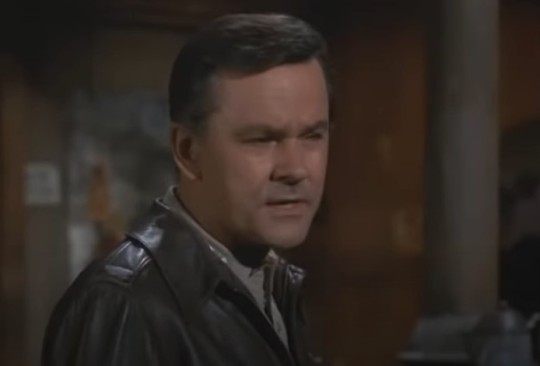
“Less than a month ago she saved my life, she saved us. She’s organized half the underground between here and Berlin”.
These are only a few examples of all the women he’s fought along side with, and he and his team continually express admiration for their courage and their skill.
It’s not just because they are women either. As we see in It Takes a Thief . . . Sometimes and The Ultimate Weapon Hogan will kill women when necessary, even those he’s slept with.
This brings me back to my original point of Hogan being from a broken family. We’ve got Hogan verbally slagging off against women, pretty much saying they’re only good for one thing and one’s as good as the next. But when it comes down to how he actually treats them, it’s as complete equals, fully capable of anything a man can do, including being soldiers and leaders. This sort of dichotomy, verbal misogyny but respectful treatment of women, is in my (completely amateurish) opinion pretty indicative of someone whose childhood consisted of both types of parents, a father who cheated and mother who couldn’t leave him. Another indication of this is in the episode Paint the Luftwaffe Red. In the hofbrau when Schultz lifts a toast and says:
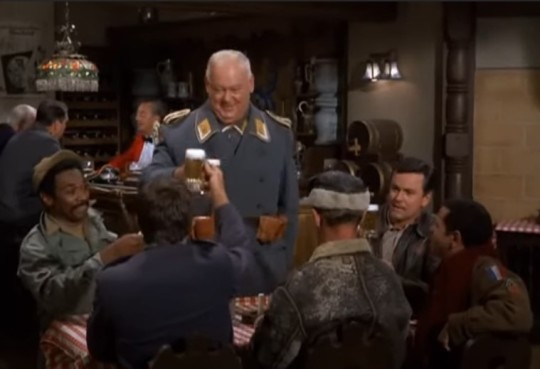
“To our wives and sweethearts”, Hogan replies, “May they never meet.”
Which brings me back to Hogan’s mother. Hogan mentions his mother in a number of episodes, either writing to her or receiving letters from her. But he never once mentions his father. Now, granted we don’t know much about any of the families of the core team. Newkirk apparently has a sister Mavis and (in one episode) eight more siblings. We know absolutely nothing about Kinch’s family, we’re not even sure what his first name is, James or Ivan. Carter mentions an uncle once and that’s about it. Yet I do find it interesting that for all of Hogan’s misogynistic talk about women he never once accuses women of being cheaters or “loose women” (I’m being polite here; most true misogynists would be using words far more graphic and uglier) and the parent he seems to have the most connection with is his mother.
The third reason that I think Hogan came from a broken family is his criminal record. In the episode, The Empty Parachute we learn that he was vandal, defacing billboards as a child and in Praise the Fuhrer and Pass the Ammunition he says that

“In school I was voted most likely to be a troublemaker”.
Now, Hogan is not like Newkirk. He didn’t grow up scrapping for a living, his brushes with the law resulting from his struggle to survive. Hogan, in my opinion, has not just that sense of self-confidence but also . . . I almost want to say sense of self-entitlement that really only comes from growing up with money. He’s upper middle-class at the very least if not higher. Add to this is that he’s an officer and while I couldn’t find what the requirements for West Point were in the 1930s when Hogan would have joined (the US Air Force Academy wasn’t established until 1957), today you need not only grades through the stratosphere but also a congressional nomination. Given that the United States was much more class conscious back then, in my mind this argues for Hogan’s family having both money and connections, especially if we factor in Hogan’s previous record which by today’s standards might be described as juvenile deliquency.
Which brings me back to my headcanon on Hogan coming from a broken family. It is very common (in my extremely limited and entirely unprofessional opinion) for children whose parents are separating or fighting constantly to act out as a way of venting their pain and frustration.
Let’s put all this together. We have a character who repeatedly disparages the whole idea of marriage and love, who plays fast and loose with women to get what he wants and is such a commitment-phobe that he practically breaks out in hives at the very idea of a serious relationship with a woman. Yet outside of sex he treats women as complete equals, in intelligence, skill, bravery, in every respect. He appears to have a good relationship with his mother but never mentions his father and he appears to have a troubled childhood despite coming from what might be described as a privileged background.
My headcanon of Hogan coming from a broken family is about the only explanation I can come up with to make sense of Hogan’s seemingly conflicting attitude and actions towards women.
#Colonel Robert Hogan#Hogan's Heroes#Colonel Klink#Sargent Schultz#my meta#Hogan's Heroes meta#headcanon
32 notes
·
View notes
Text
History of the Northrop P-61 Black Widow

The P-61 Black Widow is not a plane that many think of when you mention World War 2 Fighters. But this seemingly impossibly large fighter saw action in almost every theater of war the Americans were a part of, barring North Africa. It’s large size carried a bristling armament of cannons and machine guns, but its secret weapon lay in it’s bulbous nose, making it dangerously effective as a night fighter.
The P-61’s design was in answer to the British’s request for a night fighter capable of prolonged sorties, perhaps 7 or 8 hours of flight. This was to answer the Luftwaffe bombers that were able to drop bombs on Britain and return to safety before Spitfires could scramble and reach the altitudes the bombers were cruising at. A capable night fighter like the P-61 would have already been in the air awaiting the Luftwaffe and would have easily trounced the slower, less maneuverable, and most importantly escortless, bombers. The US Army Air Corps made note of these requirements for a night fighter, and awarded a contract to Northrop, which later became Northrop-Grumman.
Northrop went through a few design decisions, but ultimately settled on a twin engine, 3 crew design with a twin tail setup. At 45 feet long, a wingspan of 66 feet, and weighing in a over 11 tons fully loaded, it was the largest fighter-class plane the United States would ever field during the war. There were some who believed that the plane was simply too large to be effective as a fighter, since it’s size and weight threw it well into light bomber range.
However large the P-61 was, it was no slouch when it came to performance. A Pratt & Whitney R-2800 Double Wasp engine was placed on each wing, providing a total of 4000 horsepower to the big bird. In terms of armament, she practically bristled with firepower, boasting 4 M2 Browning .50 caliber machine guns on her dorsal ridge, controlled by any of the three crew. More impressively, it boasted 4 20mm Hispano M2 cannons along it’s belly, controlled by the pilot. Once the Black Widow was on target, there was a withering hail of bullets on the way to it’s prey.
But the weapon that made the P-61 so effective at night fighting wasn’t a weapon at all. It was the radar machinery housed in her prominent nose. The radar unit was an Searchlight Controller Radar, or SCR, which was developed at MIT. The radar had a rough range of about 5 miles, which the radar operator would use to select targets, guide the pilot to them, and keep them on radar, by manually adjusting the scope of the radar until a visual confirmation could be achieved. The P-61 first used the SCR-520 AI (The AI standing for Air Intercept), but later upgraded to the SCR-720 AI for the B-Model. This radar model, along with it’s purposeful design towards night fighting, gave it stellar performance over other adapted night fighters, like the de Havilland Mosquito or the Bristol Beaufighter.
However, the P-61 was not without flaw. Critically, it had a hard time keeping up with faster aircraft, particularly with the advanced aircraft of the Luftwaffe. One Black Widow pilot, Lt. Van Neiswender, tells a tale during the Battle of the Bulge that highlights this problem. The LT tracked a target into lock-on distance, and identified the target as a Messerschmitt 410. The 410 simply did a half-roll before beginning a steep dive. The P-61 pursued at full throttle, but the 410 buzzed away at over 400 mph leaving the P-61 behind before it could fire it’s weapons. During the P-61’s dive, the LT encounted another common problem with the A and B models: The plexiglas tail cone crunched under the air pressure of the dive manuever, and detached from the plane. Although the C-Model would fix both of these problems, by improving performance considerably, none of the changes could be made before World War 2 ended, meaning they never saw combat during any theatre of that war.
Action that the P-61 did see was usually to great effect, specifically in the Pacific Theatre after Guadalcanal was captured by the United States. Because of Guadalcanal’s proximity to Japanese airfields on other islands, the P-61 became a powerful tool to intercept bombers and protect the American’s base on the island. Although the P-61 wasn’t to arrive until May of 1944, was quickly put into use and proved it’s worth. In particular, the P-61 was the only night fighter that could reach the Mitsubishi G4M Betty Imperial bomber. On June 30th, Lt. Dale Hauberman and his Flight Officer were on patrol when they spotted a lone G4M headed for the airfield at Saipan to bomb it. After approaching and angling his shot, a single short burst of 20mm cannon fire caused the Japanese bomber to explode in incredible fashion.
The very next day, Lt Wolf and Radio Officer Allain were scrambled from New Guinea to intercept a target picked up on ground radar. Despite the foul weather, the powerful radar of the P-61 was able to find the target and guide them in. The target, either a Mitsubishi Ki-21 or Ki-46 twin engine bomber, was quickly spotted and locked on. Both the Browning machine guns fired by Allain and the Hispanos fired by Wolf found their mark, exploding the bomber’s starboard engine and ripping the fuselage apart, scattering the pieces into the ocean. The 418th Night Fighting Squadron would boast the top kills with their P-61s with 18 kills. Of particular note were the 3 Ki-61 kills the squadron was able to down in a single night.
The P-61 would eventually be pulled from service as a night fighter after the war ended, being replaced by the newer F89 Scorpion fighter jets and the P-82 Twin Mustangs. However, it found a bit of renewed life as a reconnaissance plane by converting to the F-15 Reporter and was of considerable use during the Korean War. It also found suprising use in the hands of the US Weather Bureau. It’s powerful radar was used to study and map the activity of thunderstorms, the data from which has vastly shaped our understanding of weather patterns, even being relatively unchanged to this day. Eventually though, it was completely retired from service in 1954, having been outpaced by aerospace technology. There are currently 4 known surviving P-61s, all located within Air Museums; A P-61C is in Dayton, OH within the WRight-Patterson Air Force Base, with another in the National Air and Space Museum in Chantilly, VA; A P-61B is located in Bejing’s Air and Space Museum at Beihang University; and a P-61B is currently under restoration to flying status at the Mid-Atlantic Air Museum in Reading, PN. If you are interested in helping contribute to the restoration, you can find more information at maam.org.
Sources:
Smithsonian National Air and Space Museum - https://airandspace.si.edu/collection-objects/northrop-p-61c-black-widow/nasm_A19510044000
National Museum of the United States Air Force - https://www.nationalmuseum.af.mil/Visit/Museum-Exhibits/Fact-Sheets/Display/Article/196248/northrop-p-61c-black-widow/
Aviation-History.com - http://www.aviation-history.com/northrop/p61.html
wikipedia - https://en.wikipedia.org/wiki/Northrop_P-61_Black_Widow
6 notes
·
View notes
Text

• Hugo Sperrle
Hugo Sperrle was a German military aviator in World War I and a Generalfeldmarschall in the Luftwaffe during World War II.
Sperrle was born in the town of Ludwigsburg, in the Kingdom of Württemberg, German Empire on February 7th, 1885 the son of a brewery proprietor, Johannes Sperrle and his wife Luise Karoline, née Nägele. He joined the Imperial German Army on July 5th, 1903 as a Fahnenjunker (officer cadet). Sperrle was assigned to the 8th Württemberg Infantry Regiment, a regiment in the Army of Württemberg, and after a year received his commission and promotion to Leutnant on October 28th, 1912. At the outbreak of World War I, Sperrle was training as an artillery spotter in the Luftstreitkräfte (German Army Air Service). On November 28th, 1914 Sperrle was promoted to Hauptmann. Sperrle did not distinguish himself in battle as his fellow staff officers in World War II had done, but he forged a solid record in the aerial reconnaissance field. Sperrle served first as an observer, then trained as a pilot with the 4th Field Flying Detachment (Feldfliegerabteilung) at the Kriegsakademie (War Academy). Sperrle went on to command the 42nd and 60th Field Flying Detachments, then led the 13th Field Flying Group. After suffering severe injuries in a crash, Sperrle moved to the air observer school at Cologne thereafter and when the war ended he was in command of flying units attached to the 7th Army.
After the war Sperrle joined the Freikorps and commanded an aviation detachment. He then joined the Reichswehr. Sperrle commanded units in Silesia including the Freiwilligen Fliegerabteilungen 412 under the leadership of Erhard Milch. Sperrle fought on the East Prussia border during the 1919 conflict with Poland. On December 1st, 1919, commander-in-chief of the German army, Hans von Seeckt issued a directive for the creation of 57 committees, encompassing all the military branches, to compile detailed studies of German war experiences. Helmuth Wilberg led the air service sector and Sperrle was one of 83 commanders ordered to assist. The air staff studies were conducted through 1920. Sperrle served on the air staff for Wehrkreis V in Stuttgart from 1919 to 1923, then the Defence Ministry until 1924. Sperrle then served on the staff of the 4th Infantry Division near Dresden. Sperrle travelled to Lipetsk in the Soviet Union at this time, where the Germans maintained a secret air base and founded the Lipetsk fighter-pilot school. Sperrle purportedly visited the United Kingdom to observe Royal Air Force exercises. In 1927 Sperrle, at the rank of Major, replaced Wilberg as head of the air staff at the Waffenamt an Truppenamt (Weapons and Troop Office). Sperrle was selected for his expertise in technical matters; he was seen as highly qualified staff officer with combat experience in commanding the flying units of the 7th army during the war. Sperrle was promoted to Oberstleutnant (lieutenant colonel) in 1931 while commanding the 3rd battalion, 14th Infantry Regiment from 1929 to 1933. Sperrle ended his army career in command of the 8th Infantry Regiment, from October 1st, 1933 to April 1st, 1934. At the rank of Oberst (colonel), Sperrle was given command of the headquarters of the First Air Division (Fliegerdivision 1). Sperrle was given responsibility for coordinating army support aviation.
After Adolf Hitler and the Nazi Party seized power, Hermann Göring created and Reich Air Ministry. Göring handed most of the squadrons in existence to Sperrle because of his command experiences. Sperrle was involved in the difficulties in German aircraft procurement. Four months after assuming command, Sperrle was rigorously critical of the Dornier Do 11 and Dornier Do 13 in a conference on July 18th, 1934. Five months later, with development failing, Sperrle met with Wolfram Freiherr von Richthofen, head of aircraft development and Luftkreis IV commander Alfred Keller, a wartime bomber pilot. It was decided Junkers Ju 52 production would be a stopgap, while the Dornier Do 23 reached units in the late summer, 1935. The awaited Junkers Ju 86 was scheduled for testing in November 1934 and the promising Heinkel He 111 in February 1935. On March 1st, 1935, Hermann Göring announced the existence of the Luftwaffe. Sperrle was transferred to the Reich Air Ministry. Sperrle was initially given command of Luftkreis II (Air District II), and then Luftkreis V in Münich upon his promotion to Generalmajor (Brigadier General) in October 1935. Sperrle remained in Germany until the outbreak of the Spanish Civil War. He commanded all German forces in Spain from November 1936 to November 1937. Sperrle was the first commander of the Condor Legion during the Spanish Civil War. Sperrle left Germany by air on October 31st, 1936 and arrived in Seville, via Rome on November 5th. Sperrle was sent a Kampfgruppe (bomber group—K/88), Jagdgruppe 88 (fighter group 88—J/88) and Aufklärungsstaffel (reconnaissance squadron—AS/88). They were supported by a Flak Abteilung (F/88) with three heavy and two light batteries with communications, transport and maintenance units. The Germans could not afford to fully equip the Legion, and so the air group made use of Spanish equipment. Of the 1,500 vehicles used, there were 100 types creating a maintenance nightmare.
After his experience leading the Condor Legion Sperrle was given command of Luftwaffe Group 3 on the February 1st, 1938 which eventually became Luftflotte 3 (Air Fleet 3) in February 1939. Sperrle commanded the air fleet for the remainder of his military career. Sperrle was used by Hitler in his foreign policy to intimidate small neighbours with the Luftwaffe, which had earned a reputation in Spain. On February 12th, 1938, Hitler invited Sperrle to a meeting at Berchtesgaden with Kurt Schuschnigg, chancellor of the Federal State of Austria. The meetings eventually helped pave the way for Anschluss, the Nazi seizure of Austria. In March 1939 Hitler decided to annex Czechoslovakia completely and risk war. He turned once again to the Luftwaffe to assist him achieving diplomatic results. The threat of aerial bombardment proved a crucial in forcing smaller nations to submit to German occupation. The successes confirmed Hitler's view that air power could be used politically, as a "terror weapon". Sperrle was asked by Hitler to talk about the Luftwaffe, to intimidate the Czech president. Hácha purportedly fainted, and when he regained consciousness, Göring screamed at him, "think of Prague!" The elderly President reluctantly ordered the Czechoslovakian Army not to resist. The aerial part of the German occupation of Czechoslovakia was carried out by 500–650 aircraft belonging to Sperrle's newly renamed air fleet, Luftflotte 3.
On September 1st, 1939, the Wehrmacht invaded Poland prompting the British Empire and France to declare war in her defence. Sperrle's Luftflotte 3 remained guarding German air space in western Germany and did not contribute to the German invasion, made possible by the non-aggression pact with the Soviet Union. The air fleet's Order of battle had been stripped of almost all of the combat units it held in March 1939. Only two reconnaissance staffel (squadrons) and a single bomber unit attached to Wekusta 51 remained. Sperrle received the competent Major General Maximilian Ritter von Pohl as his chief of staff. The two men made for a "good partnership". Sperrle was also assigned Major General Walter Surén, appointed as the air fleet's chief signals officer. Surén planned and organised the German field communications for the offensive in 1940. While guarding the Western Front during the Phoney War, Sperrle's small fleet of 306 aircraft which included 33 obsolete Arado Ar 68s fought off probing attacks of French and British aircraft. Sperrle developed a reputation as gourmet, whose private transport aircraft featured a refrigerator to keep his wines cool, and although as corpulent as Göring, he was reliable and as ruthless as his superior. Sperrle wanted his air fleet to take a more aggressive stance and won over Göring. On September 13th, 1939 he was authorised to undertake long-range high altitude reconnaissance missions at extreme altitudes. Photographic operations over France authorised by the OKL began on September 21st, which the Oberkommando der Wehrmacht did not sanction until four days later.
Luftflotte 3 was heavily reinforced in the spring, 1940. Sperrle's headquarters was based at Bad Orb. The air fleet was assigned I. Flakkorps under Generaloberst Hubert Weise, I. Fliegerkorps under Generaloberst Ulrich Grauert at Cologne, the II. Fliegerkorps under Generaloberst Bruno Loerzer at Frankfurt, and V. Fliegerkorps under command of General Robert Ritter von Greim at Gersthofen. For the coming battle, Sperrle had 1,788 aircraft (1,272 operational) at his disposal. Opposing Sperrle, was the Armée de l'Air (French Air Force) eastern (ZOAE) and southern (ZOAS) zones under Général de Corps d'armée Aérien René Bouscat and Robert Odic. Bouscat had 509 aircraft (363 operational) and Odic 165 (109 combat ready). Fall Gelb began on May 10th,1940. Sperrle's air fleet engaged in operations supporting Generalfeldmarschall Gerd von Rundstedt and Army Group A in the Battle of Belgium and Battle of France, as well as Army Group C. Sperrle's counter-air campaign started badly, reflecting poor photographic interpretation of targets, though he later claimed Luftflotte 3's operations were decisive in achieving air superiority. Sperrle's men claimed 240 to 490 aircraft destroyed, mostly "in hangars"—Allied losses were actually 40 first-line aircraft. Failing to neutralise Allied fighter units cost Sperrle 39 aircraft. Sperrle's air corps commanders targeted air interdiction operations and ordered, attacks on rail communications to prevent the westward deployment of the French Army from the Maginot Line and to pin down Allied reserves by disrupting communications across the Meuse. 26 French rail stations were bombed as were 86 localities from May 10th to 12th. During the breakthrough to the English Channel, rail networks were attacked to prevent Allied forces rallying. Sperrle and Kesselring objected to the halt order during the Battle of Dunkirk. Neither man believed the pocket could be reduced by air power alone. Gelb was complete, and the OKL prepared for Case Red. The Luftflotten were reorganised; Sperrle retained II. and V. Fliegerkorps along with I. Flakkorps. The flak corps was reorganised into two brigades, with four regiments each with the firepower of 72 batteries. Sperrle was required to strike far deeper into France, and was given the majority of Zerstörer (destroyer aircraft) equipped with Messerschmitt Bf 110.
In a prelude to the offensive, Sperrle planned to carry out strategic bombing operations against Paris. Sperrle had long-planned for air attacks on Paris using II., V. and VIII. Fliegerkorps in May. He was forced to abandon the plan on May 22nd because of weather, but the following day, the OKL prepared a plan for Operation Paula. The plan was to attack the estimated 1,000 French aircraft detected on Parisian airfields, but also to attack factories and destroy the morale of the French people. The operation was undone by poor staff work and excessive confidence in the Enigma machine. On June 5th Sperrle's forces flew eight bombing operations against railways and localities, 21 to 31 against road targets, 12 against troop columns and 34 to 42 against French Army defences or strongpoints. Sperrle was ordered to support Rundstedt advancing southward, with orders to encircle the Maginot Line, from the west. The campaign played out for a further five days, which came as Luftwaffe logistics were breaking down, fuel and ammunition shortages were acute and relied on air transportation. Sperrle attempted to prevent the British Operation Ariel a second evacuation but the only success was the sinking of Lancastria, with 5,800 lives lost. On June 20th arrangements were made for the Armistice of June 22nd, 1940. Upon learning of it, Sperrle ordered the abandonment of a planned bombing operation against Bordeaux. In July 1940 Winston Churchill's government rejected peace overtures from Hitler. Hitler resolved to knock Britain out of the war. The OKL began tentative planning for Operation Eagle Attack to destroy RAF Fighter Command to gain air superiority, before supporting an amphibious landing in Britain, codenamed, Operation Sea Lion.
Sperrle thought the RAF could be defeated en passant. His personal strategy to attack ports and merchant shipping was overruled by Göring, ostensibly because the ports would be required for the invasion. Kesselring's contemporary notes indicate he thought air superiority could only be attained for a short time, since most airfields and factories in Britain were out of range. Sperrle and Kesselring miscalculated, or were misled by intelligence, into underestimating the number of fighter aircraft available to Fighter Command. They put the RAF total at 450 aircraft when the real figure was 750. Chronic intelligence failures on British production, defence systems and aircraft performance inhibited the German air operation throughout the battle. The Luftwaffe regrouped after the Battle of France into three Luftflotten (Air Fleets) . Sperrle's first task against the British Isles was during the Kanalkampf (Channel Battle) phase of what became known as the Battle of Britain. The aim was to draw out Fighter Command into dogfights by attacking Channel Shipping. Targeting British convoy systems, in July 1940 Sperrle's air fleet claimed 90 vessels sunk for approximately 300,000 tons, a third of this was claimed over August and September. Two days before Operation Eagle scheduled for August 13th he had lost two Gruppenkommandeur and a Staffelkapitän. Sperrle knew he could not afford to lose experienced officers at such a rate. The emphasis of German air attacks switched to bombing Fighter Command bases and its infrastructure. On August 13th, 1940, Sperrle's air fleet played a role in the failed Unternehmen Adlerangriff ("Operation Eagle Attack"). On the August 14th, Sperrle began a smaller, prolonged, but widely scattered series of attacks on aerodromes and other targets in the western half of England. The attacks were not very effective and earned the Luftflotte a rebuke from Göring. At the beginning of September 1940, Sperrle could muster 350 serviceable bombers and dive-bombers and about 100 fighters, either for his own purposes or to support the 9th Army and, if necessary, the 6th Army in a landing. Sperrle lost Richthofen to Kesselring who took possession of some units in Normandy, and concentrated the available dive-bomber force near the Straits of Dover.
The bombing operations continued against Fighter Command into October 1940, but with gradually more emphasis placed on attacking industrial cities, primarily because it offered the only way to continue hostilities against Britain directly in the absence of invasion. The preference for night over day operations was evident in the number of bombing operations flown by the German air fleets. Sperrle had spent the last week of August and first week of September gearing up for large–scale night operations. Sperrle's air fleet assisted in the beginning of The Blitz which began in earnest on September 7th, 1940. This night approximately 250 aircraft dropped 300 tons of high explosive and 13,000 incendiaries on the centre of London. Sperrle's airmen flew 4,525 bombing operations in November 1940. In December 1940 Sperrle's air groups flew 2,750 bombing operations against British cities. In February 1941 bad weather limited Sperrle to 975 bombing operations. During the month of May Sperrle's men carried out the burden of night operations, flying 2,500 sorties. Approximately 40,000 British civilians had been killed, another 46,000 injured, and more than a million houses damaged during the Blitz. The German air fleets lost 600 German aircraft on night operations. In five months of bombing docks and ports in 1941, only some 70,000 tons of food stocks were destroyed, and only one half a percent of oil stocks. Damage to communications was quickly repaired. Everywhere except in the aircraft industry the loss was too small a fraction of total output to matter seriously. In early June 1941, the majority of German bomber units moved eastward to the soon-to-be Eastern Front, in preparation for Operation Barbarossa.
Sperrle had been involved in the war at sea since the first phase of the Battle of Britain. He received an OKL directive on October 20th, 1940 ordering him to attack shipping once again in the Thames Estuary. He ordered his dive-bombers into this service, but they were rapidly neutralised in November by a "dynamic defence". The most effective support for the U-boat campaign came from attacking ports in 1941. Direct support to the Kriegsmarine in the Battle of the Atlantic was haphazard; successes were won by accident rather than by design. The Atlantic command came under Sperrle's control upon formation but was subordinated to Sperrle officially on April 7th, 1942. The name of the command was misleading, for it was tasked with maritime interdiction operations all around the British coast besides operating deep into the Atlantic. In the 46 months following July 1940, German aircraft sank 1,228, 104 tons of merchant shipping and damaged 1,953, 862 tons. Another 60, 866 tons were sunk or damaged by mines in 1942 and 1943. The failure to properly cooperate with the navy against shipping was a grave strategic error which prevented the achievement of greater results. For a brief period in March 1943 before the German defeat in Black May Sperrle intended to increase his command to 22 groups for Atlantic operations. From the Allied perspective, the Atlantic campaign became nothing more than a "skirmish" by the autumn, 1943.
In 1942 another threat emerged when the United States Army Air Force (USAAF) began bombing raids against targets in Belgium and France. Sperrle's fighter pilots carried the burden of the defence in 1942. Later that year, JG 1 was assigned to Luftwaffenbefehlshaber Mitte, later known as Luftflotte Reich (Air Fleet Reich) but saw little action since USAAF rarely crossed into the Netherlands. Thereafter, the air war only escalated. Sperrle resisted attempts by Luftwaffenbefehlshaber Mitte to gain control of anti-aircraft forces or to allow the physical degradation of his air fleet, and the offensive mindedness of the OKL favoured front-line units. In March 1943, an immediate rise in losses had already been noted. A report from Luftflotte 3 recognised the size and defensive power of American bombers required a timely interception by massed formations for any chance of success. In July alone, western fighter forces lost 335 single-engine aircraft to all causes. On the German side, there was a call to unify German fighter forces and hold them back from coastal and keep them out of Allied fighter escort range. Regardless of the logic, Sperrle opposed the idea to preserve his command. Sperrle was sensitive to a centralise command for fighter forces and resisted. On September 15th, 1943 an effort to improve Sperrle's organisation was made by creating II. Jagdkorps with the 5th and 4. Jagd Division. The improvement in command and control made little difference in the battle with the USAAF for neither division received the reinforcements it needed. At the end of 1943, the German air defences won temporary successes against the USAAF Eighth Air Force. In February 1944, Big Week targeted German and French–based targets. The German fighter force was bled white over the following two months. In the lead up to June 1944, Luftflotte 3 remained weak, and contained few ground-attack aircraft; nearly all were based on the Eastern Front. Sperrle's fighter pilots were required to attack the landing forces.
A major effect of the combined offensive on Sperrle's air fleet was the diversion and reinforcement of Luftflotte Reich at the expense of Luftflotte 3. By June 1944, the number of fighter aircraft available in the west numbered just 170. Sperrle's air fleet had, at most, 300 fighter aircraft on June 6th, 1944 to contest the D-day landings. The Western Allies amassed 12,837, including 5,400 fighters. Sperrle's air fleet was particularly weak in night fighter units. Given the low priority for their production, Sperrle went for periods with no night–fighting capabilities despite the crucial geographical position of his air fleet and the exposure of important French industries to night attack. Sperrle's air fleet was reinforced on Göring's orders for the purpose of bombing London. The offensive was named Operation Steinbock and began in January 1944. British defences had improved dramatically since 1941 and were fully prepared to repel the attacks. The offensive wasted the last German bomber reserves. The losses were a blow to Sperrle. Sperrle's air fleet Enigma signals had been cracked and ULTRA codebreakers from Bletchley Park deciphered signals sent by Luftflotte 3 headquarters to the OKW. Reading the reports, Allied intelligence deduced that the bombing operations against bridges, west of the Seine, and fighter activity between Mantes and Le Mans, had convinced the air fleet staff the invasion would take place in the Pas de Calais. Allied attacks in May 1944 against bases had a devastating impact on Luftflotte 3 capabilities. ULTRA gave the Allies intelligence on the location and strength of German fighter units as well as the effectiveness of attacks. Further damage was done to Sperrle's air defence network. Some 300,000 personnel worked in Luftflotte 3, 56,000 in signals. The fortification of radar sites after Dieppe had only highlighted them, and 76 of the 92 were knocked out by D-Day. The Allies enjoyed complete air superiority on June 6th, 1944 and flew 14,000 missions in support of the invasion. On the first day, the British and Commonwealth landed 75,215 men and the Americans 57,500. A large force of 23,000 paratroops parachuted in during the night. Luftflotte 3 barely reacted.
Sperrle was dismissed from his post on August 23rd, 1944, hours before American and French forces liberated Paris and overran his headquarters. As the German front collapsed in the aftermath of the Falaise pocket, the air fleet ground organisation uprooted and fled east across the Seine. Hitler charged the personnel of the 3rd air fleet with desertion and held Sperrle responsible. On September 22nd,1944 his former command was downgraded from air fleet to air command status. By the time of his dismissal, Sperrle had purportedly long since lost faith in the German war effort and in Hitler and Göring's military leadership. He had become lazy and had a tendency to indulge in the trappings and luxury lifestyle occupied France offered. During the war Hitler had occasionally gifted Sperrle artwork that may have been looted from occupied territories. Analysts of Sperrle's performance have been critical of his perceived inaction in Normandy and point to critical contemporary army reports on the failures of his command. Others have questioned Sperrle's influence on the conduct of operations and suggested he was a convenient scapegoat for Göring. Sperrle remained embittered after the defeat in France. He was deemed unfit for a senior command and spent the rest of the war in the Führerreserve. On May 1st, 1945, Sperrle was arrested by the British Army and became a prisoner of war. Sperrle was captured by the Allies and charged with war crimes in the High Command Trial at the Subsequent Nuremberg Trials but was acquitted. The court concluded that Sperrle had never been a member of the Nazi Party nor one of its affiliate organizations. After the war, he lived quietly and died in Munich on April 2nd, 1953 at the age of 68.
#second world war#world war ii#world war 2#military history#wwii#history#german history#luftwaffe#long post#biography#aviation#battle of normandy#battle of britain
36 notes
·
View notes